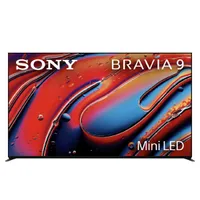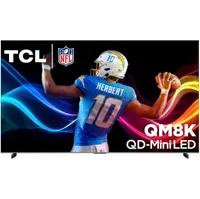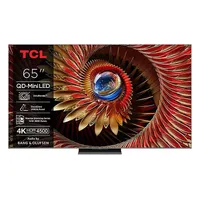The best 75-inch TVs, all tested by our big-screen experts

The best 75-inch TVs would have seemed like a premium screen at one time, but thanks to falling prices, this big screen size is more affordable than ever.
Plenty of the best TVs on the market come in a 75-inch size, and these day you can find screens at this size similarly priced and in some cases even cheaper than some of the best 65-inch TVs that are a step up in performance.
We've curated the below list of the best 75-inch TVs to feature sets we've tested, putting them through their paces and judging their picture quality, sound quality, gaming, smart TV and crucially, the bang for your buck they deliver.
We tested all these sets ourselves, putting them through both objective and subjective tests, and comparing them against their direct rivals. We have options for all budgets, ranging from the best OLED TVs at premium prices to affordable big-screen bang-for-your-buck winners.
Quick list

The best 75-inch for most people
Delivering superb versatility thanks to its excellent picture quality, a full suite of gaming features and best-in-class price, the LG C5 stands tall on this list.

The best budget 75-inch TV in the US
Want mini-LED and plenty of features in a big-screen size without paying a premium? The QM7K could be your perfect TV.
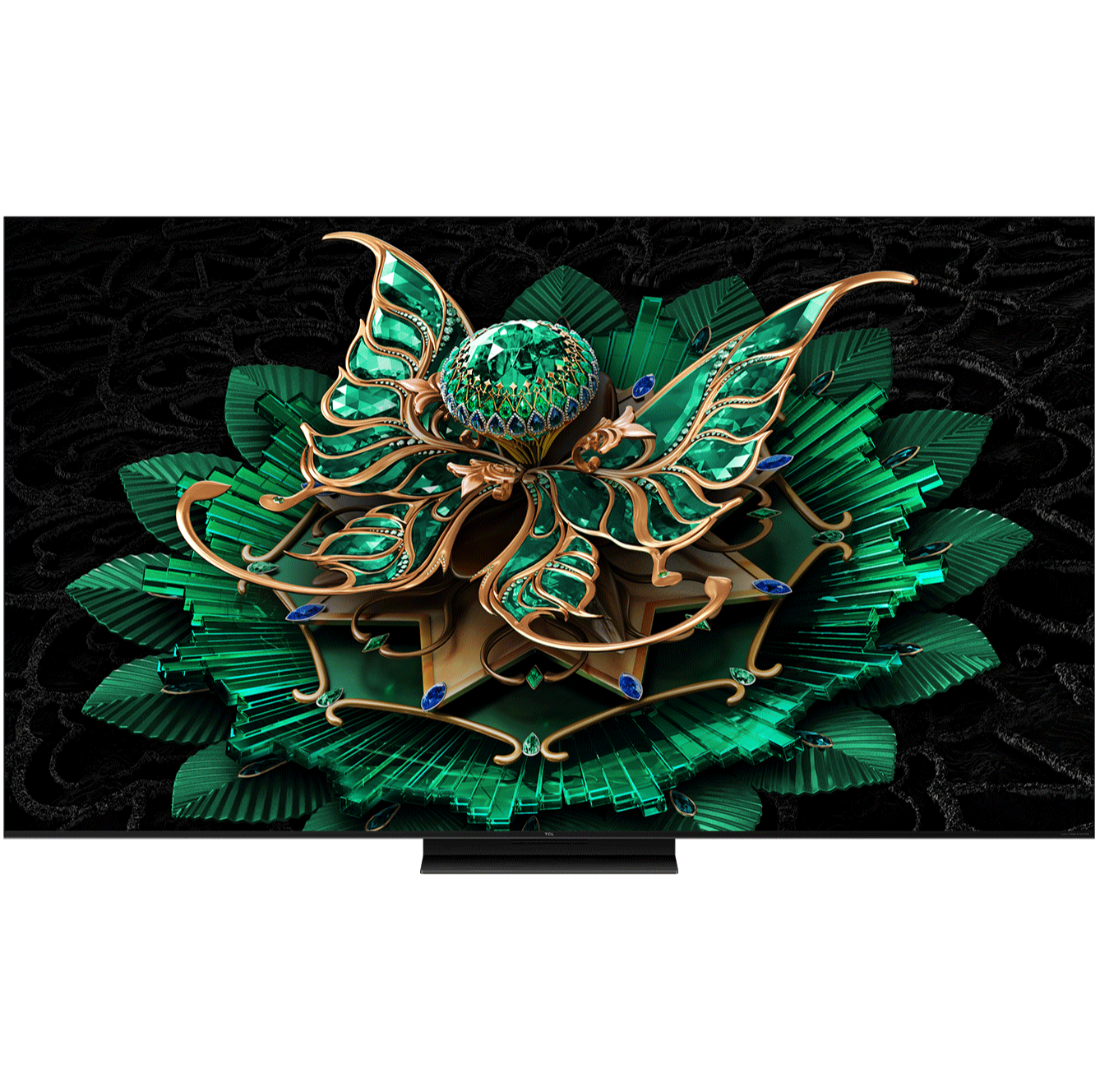
The best budget 75-inch TV in the UK
The TCL C7K's mini-LED backlight lets it deliver great picture quality, and it also has impressive gaming features for a TV at this price.

The best mid-range 75-inch TV
If you want a great TV for movies, the Hisense U8QG delivers bold, bright pictures and solid sound, plus it's great for gaming. And it rivals premium brands such as Samsung and Sony with its more budget friendly price.

The best 75-inch premium OLED TV
The LG G5 delivers contrast and color-rich picture quality and phenomenal gaming features and performance at the most competitive price in a 77-inch size.
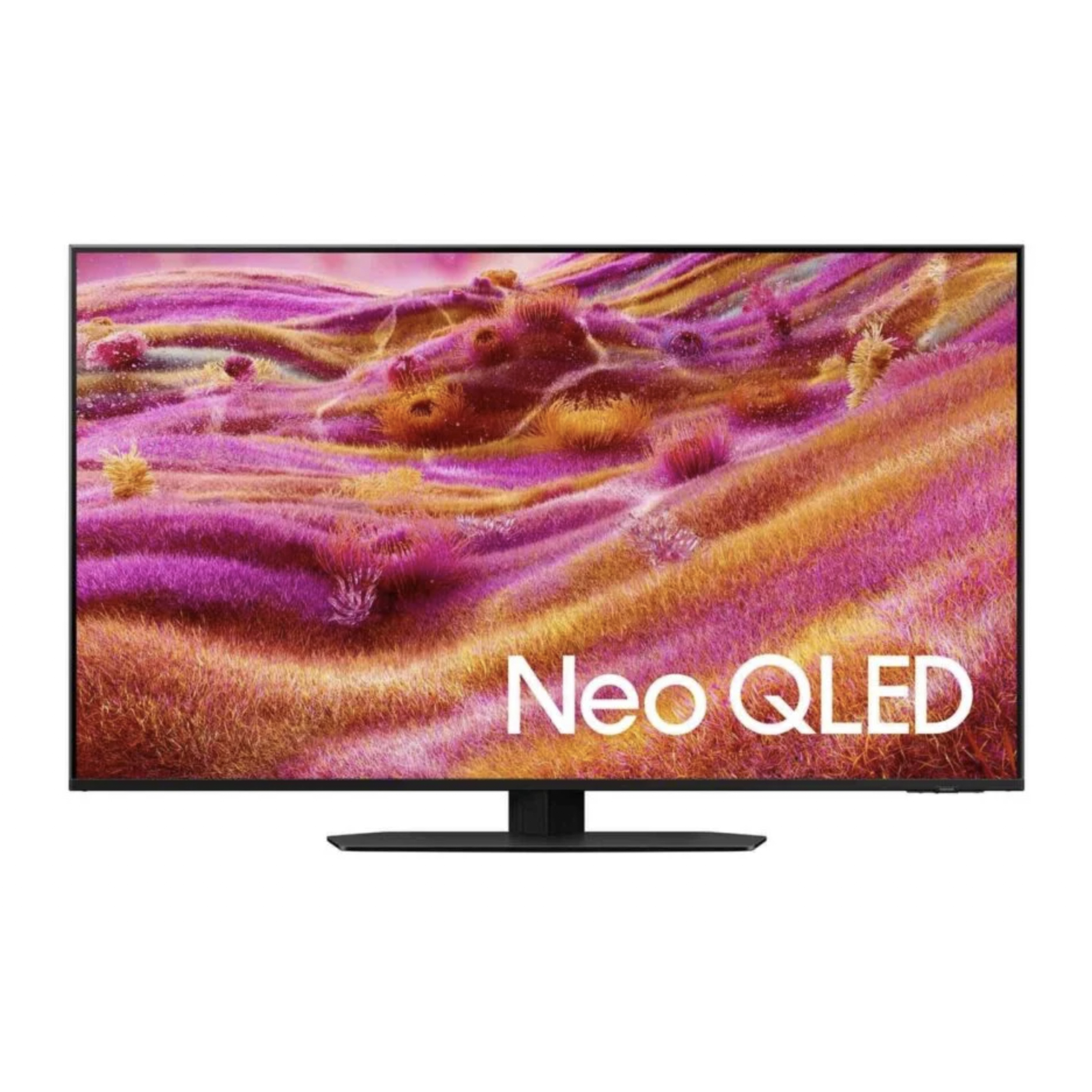
The best 75-inch TV for bright rooms
The Samsung QN90F mini-LED may be the perfect TV for bright rooms thanks to its high brightness and glare-free screen It's also a great TV for gaming and sports.

Al Griffin is TechRadar's Senior Editor for Home Entertainment in the US. Previously the editor of Sound & Vision magazine, he brings nearly three decades of tech journalism and AV product testing experience to the position. He's helped find the best 75-inch TVs available, from OLED magic to bang for your buck budget sets.
November 7, 2025
Made an overhaul of this guide. Added in LG as 'best overall', TCL QM7K as 'best budget US', TCL C7K as 'best budget UK', Hisense U8QG as 'best mid-range', LG G5 as 'best premium OLED' and Samsung QN90F as 'best for bright rooms'. Updated other TVs to consider and how we test sections. Removed other TVs coming in 2025 section.
The best 75-inch TVs you can buy
Why you can trust TechRadar
The best 75-inch TV overall

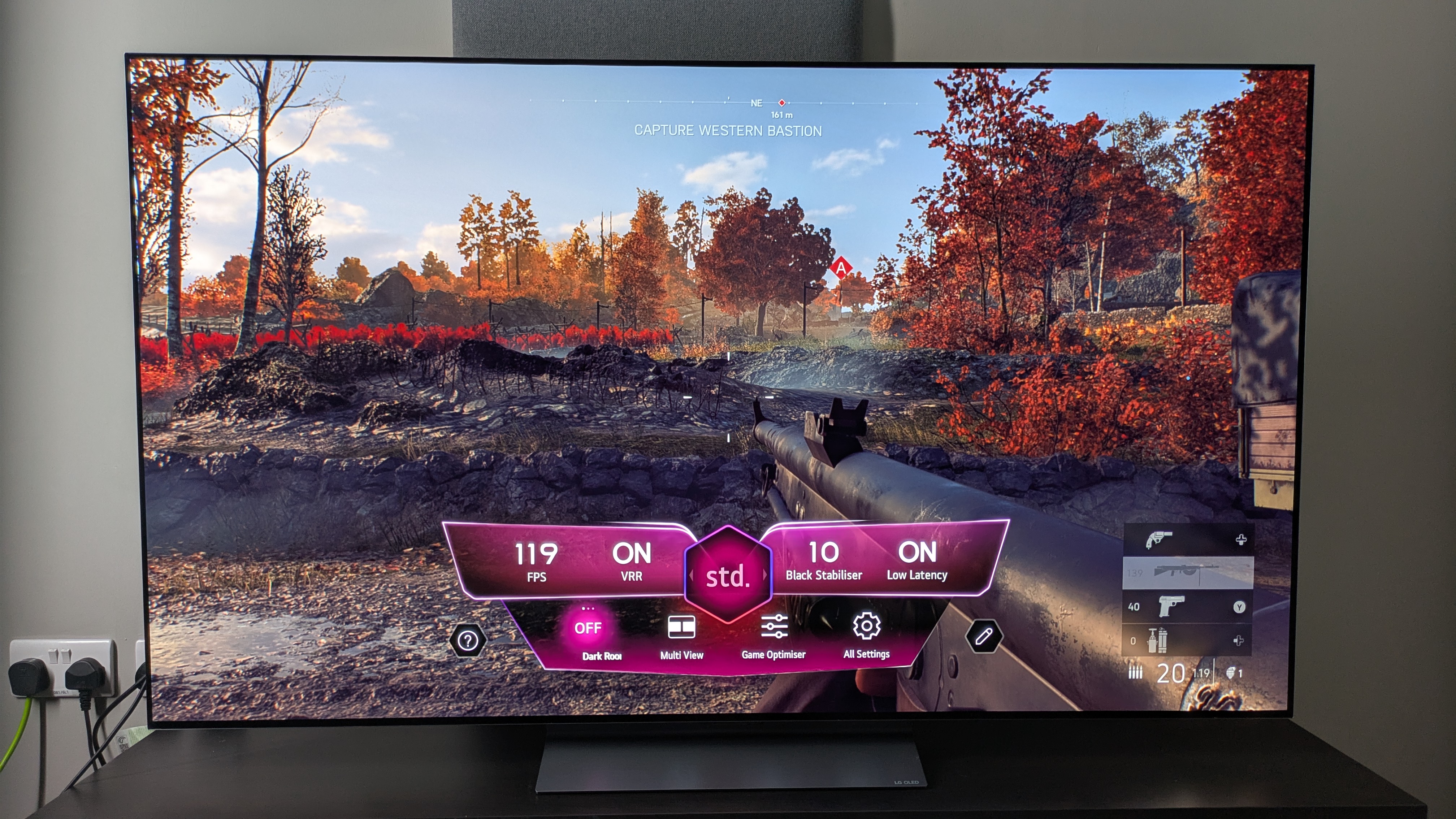
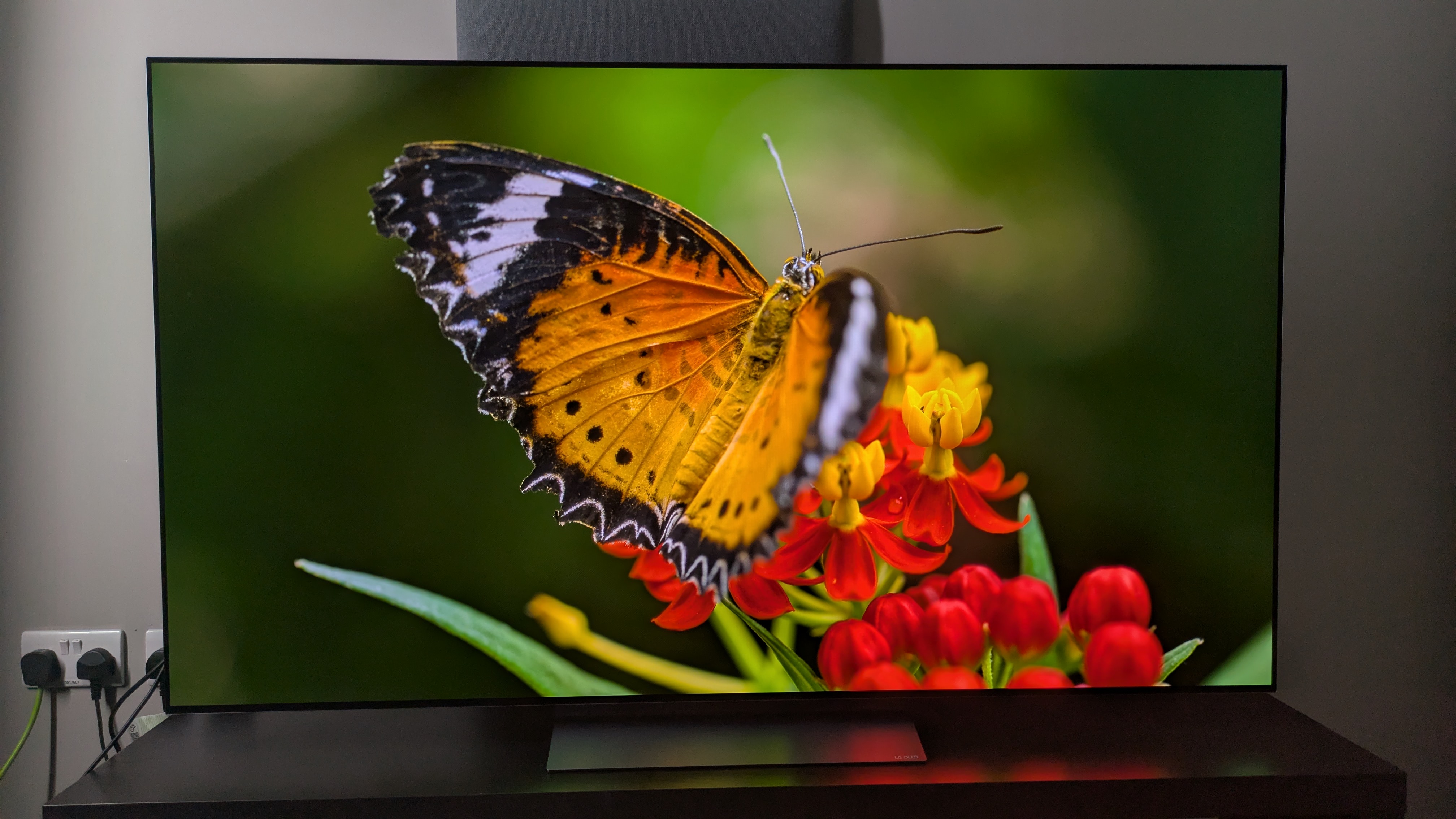
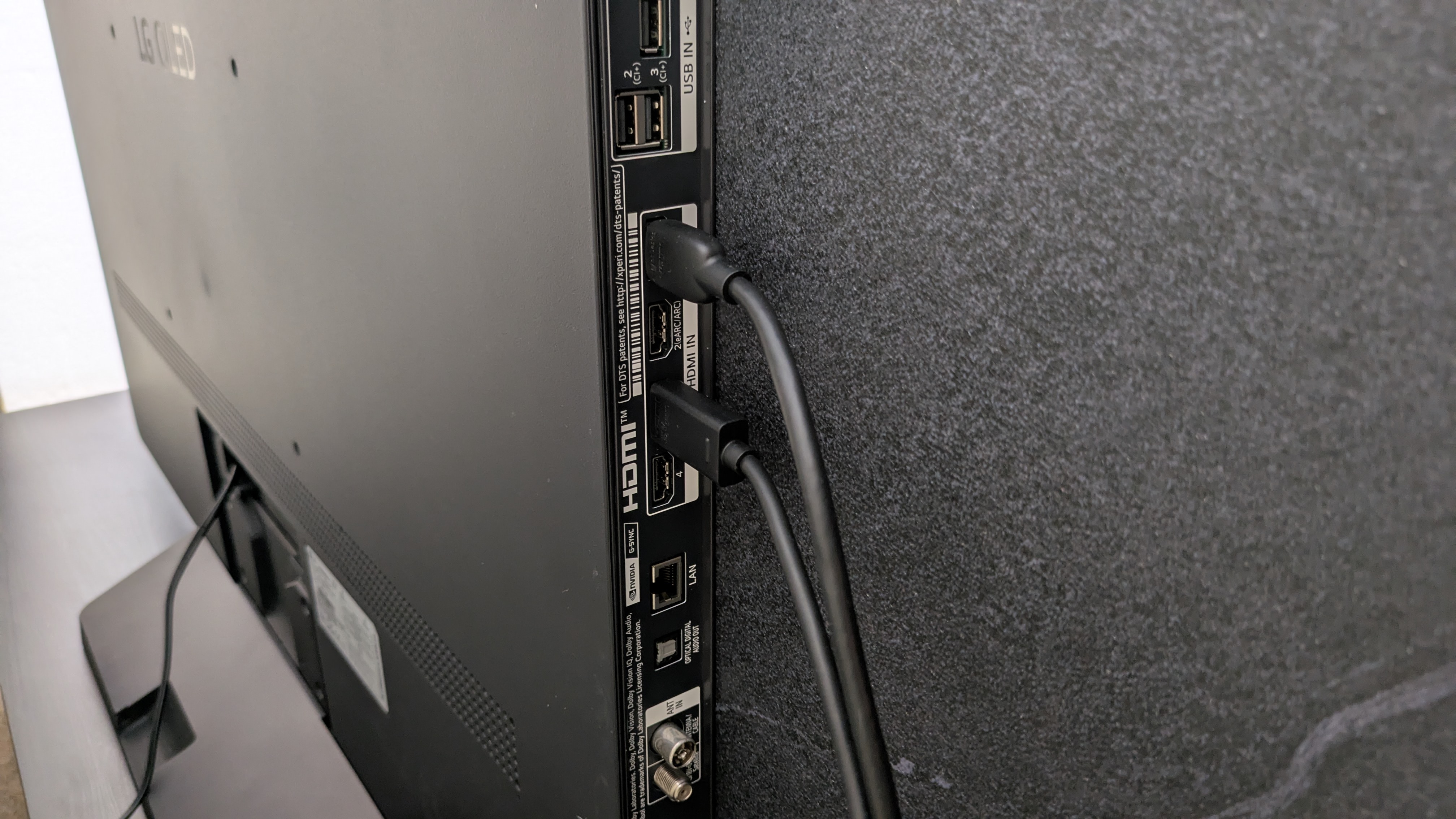
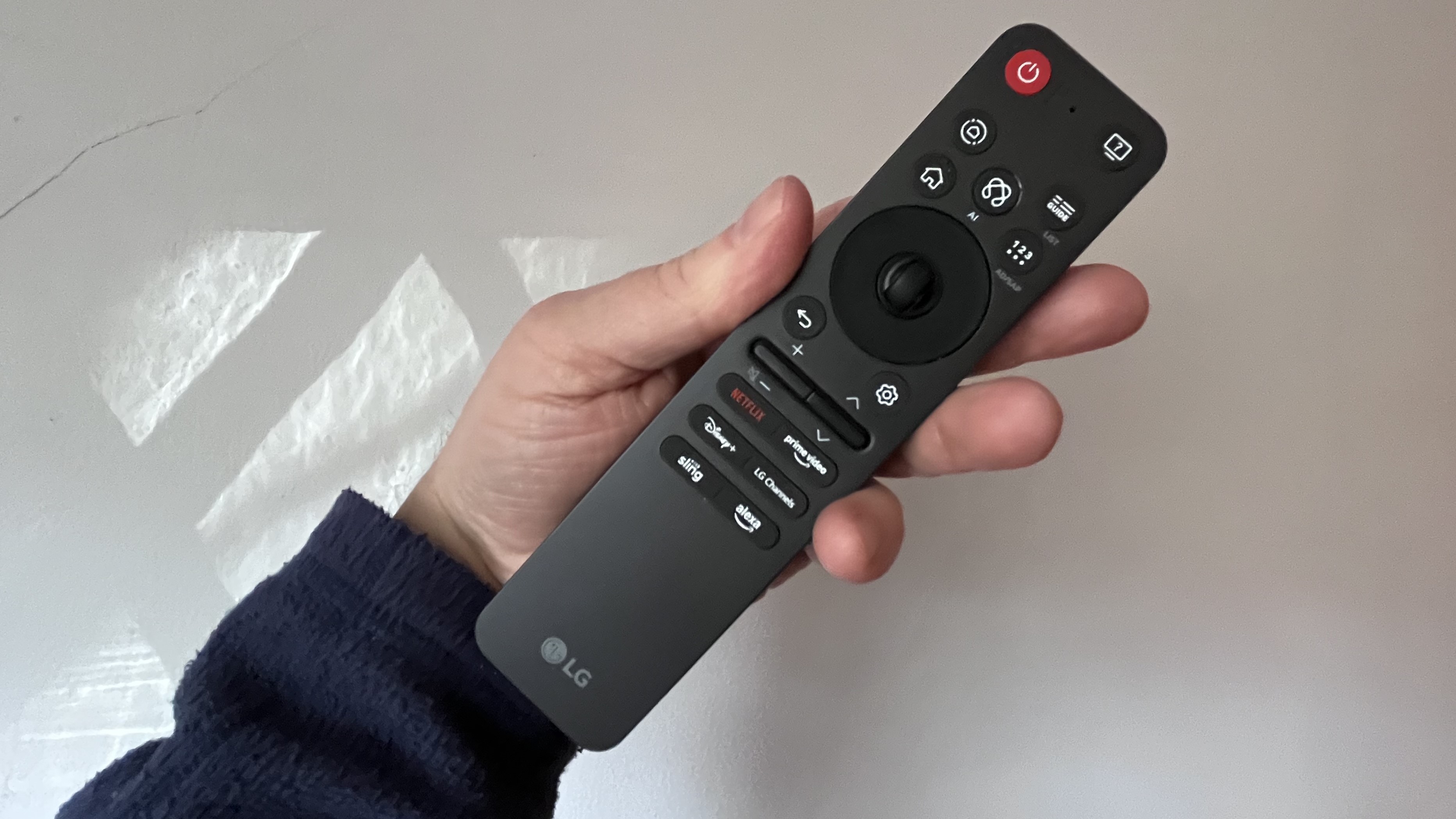
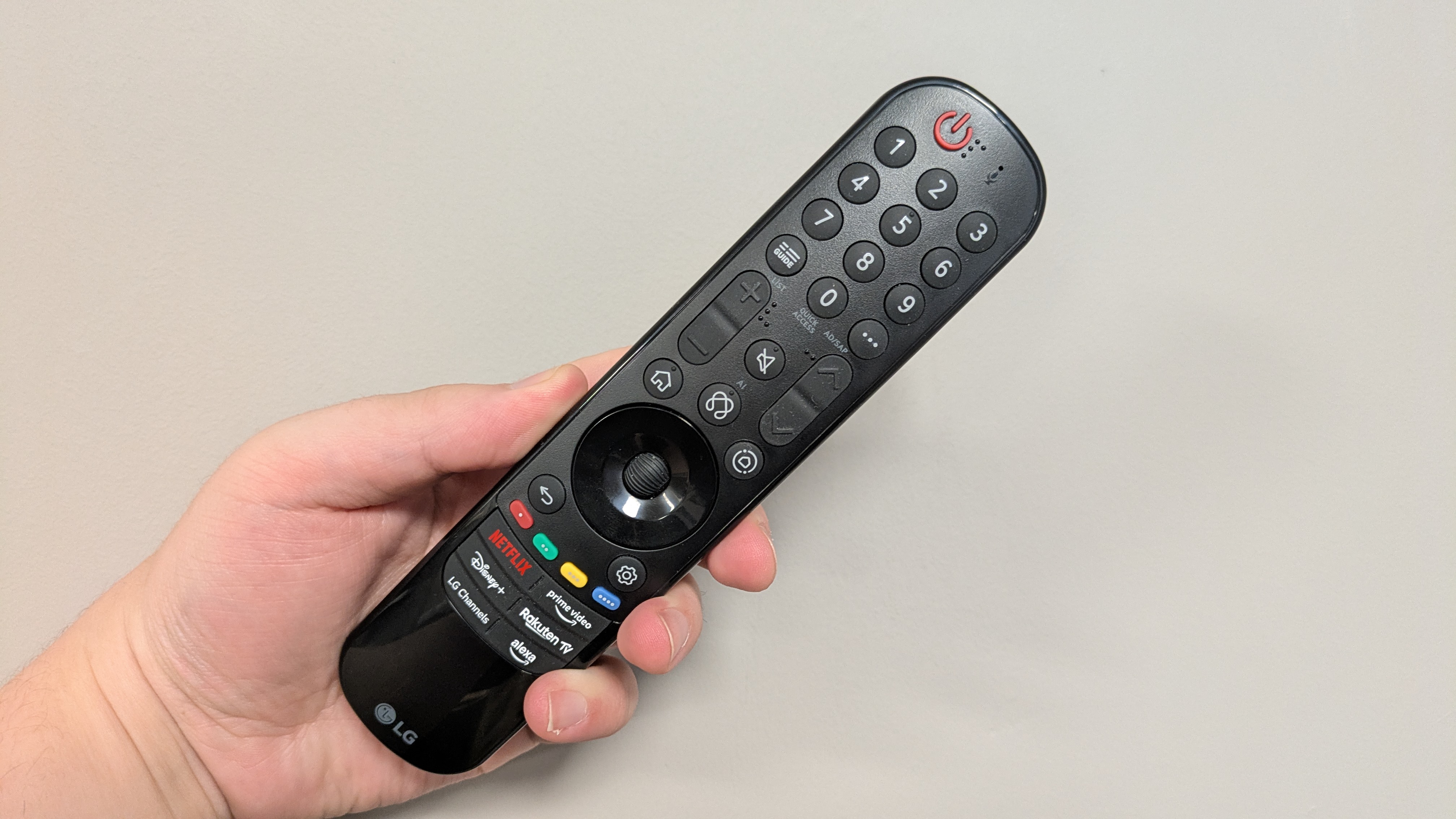
Specifications
Reasons to buy
Reasons to avoid
✅ You want great picture quality: The C5's picture is refined, colorful and delivers strong contrast – there isn't much better at this price range.
✅ You're a gamer: 4K 144Hz and Dolby Vision gaming support on all four HDMI ports, along with many other gaming features, make this a gaming dream.
❌ You own the LG C4: A smart TV platform update and a slight brightness boost are all that really separate the C5 and its predecessor.
❌ You want the cheapest gaming TV: Mini-LED TVs from Hisense and TCL have many of the same features as the C5, and LG's B5 OLED is a cheaper OLED.
The LG C5 delivers an OLED experience in a 77-inch size without paying the premium prices of step-up OLEDs such as the LG G5, while still offering a complete set of features and stunning picture quality.
During my C5 testing, I found the C5's picture quality stunning. It delivers vibrant colors that are perfect for animated movies like Elemental, but also offers powerful contrast and true-to-life textures in real-world movies such as The Batman. It also delivers excellent motion handling for sports and with a slight brightness boost over its predecessor, showcases strong HDR highlights that add extra detail.
I found gaming on the LG C5 a ton of fun. Its ultra-low 9.2ms input lag and excellent picture combine to make gaming feel responsive and immersive, as I found playing Battlefield V. It also comes with all the features gamers are looking for including 4K 144Hz, FreeSync and G-Sync, HGiG, Dolby Vision gaming and ALLM, all of which are supported on all four HDMI 2.1 ports. There aren't many better gaming TVs at this size.
The C5 also uses LG's webOS 25 smart TV platform, which is intuitive, responsive and has an easy-to-use layout, a dream for someone like me who needs to tweak picture settings. New AI features will be very useful for some users, making webOS feel like the total package and the best smart TV platform on the market.
While there are cheaper TVs that have a lot to offer at a 75-inch size, the C5 is the most 'complete' TV at this size. It delivers the best picture quality and features to price ratio out of any TV and that's why it's top of this list.
Find the best deals on LG products with our LG coupon codes.
The best budget 75-inch TV in the US

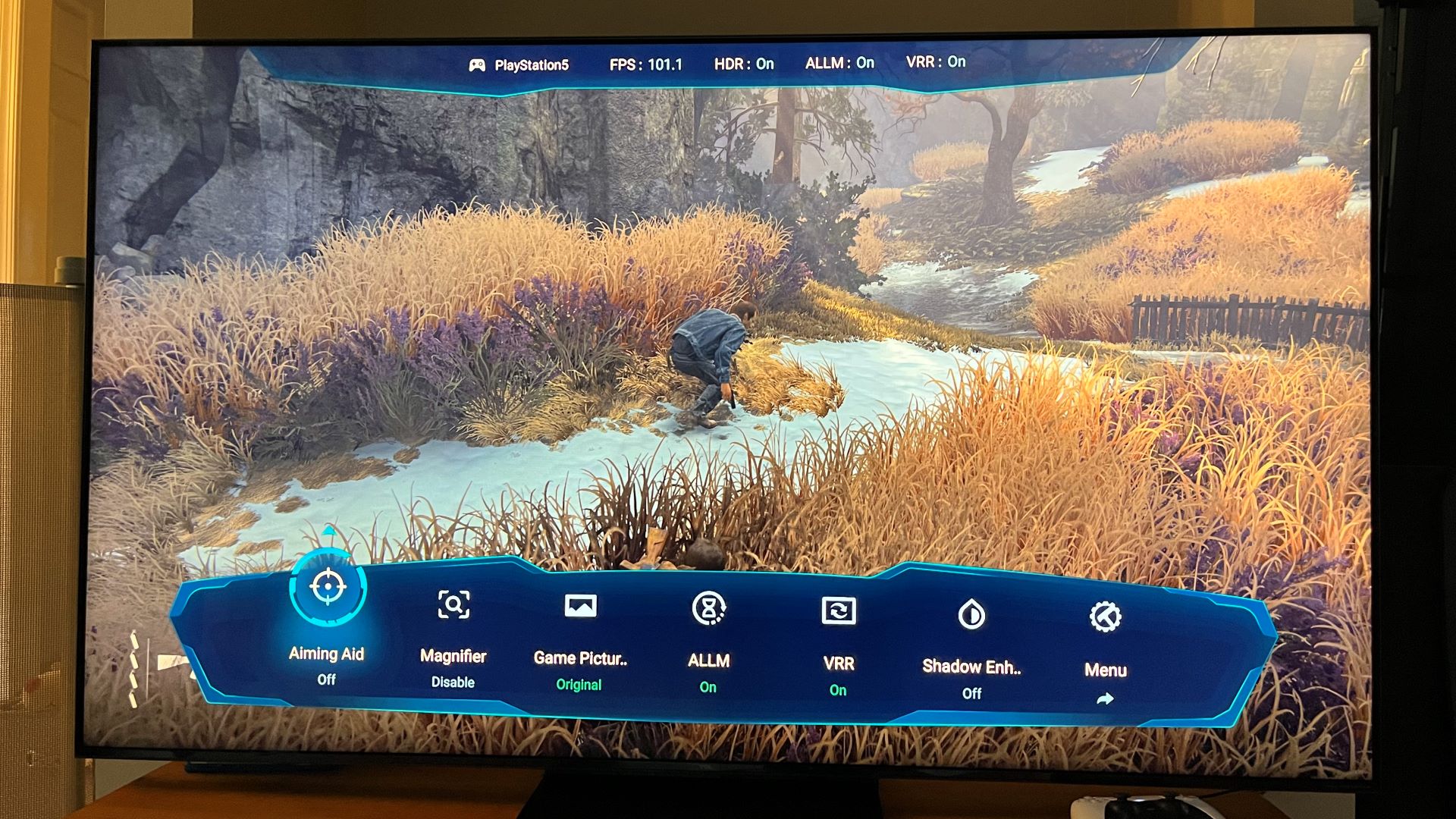
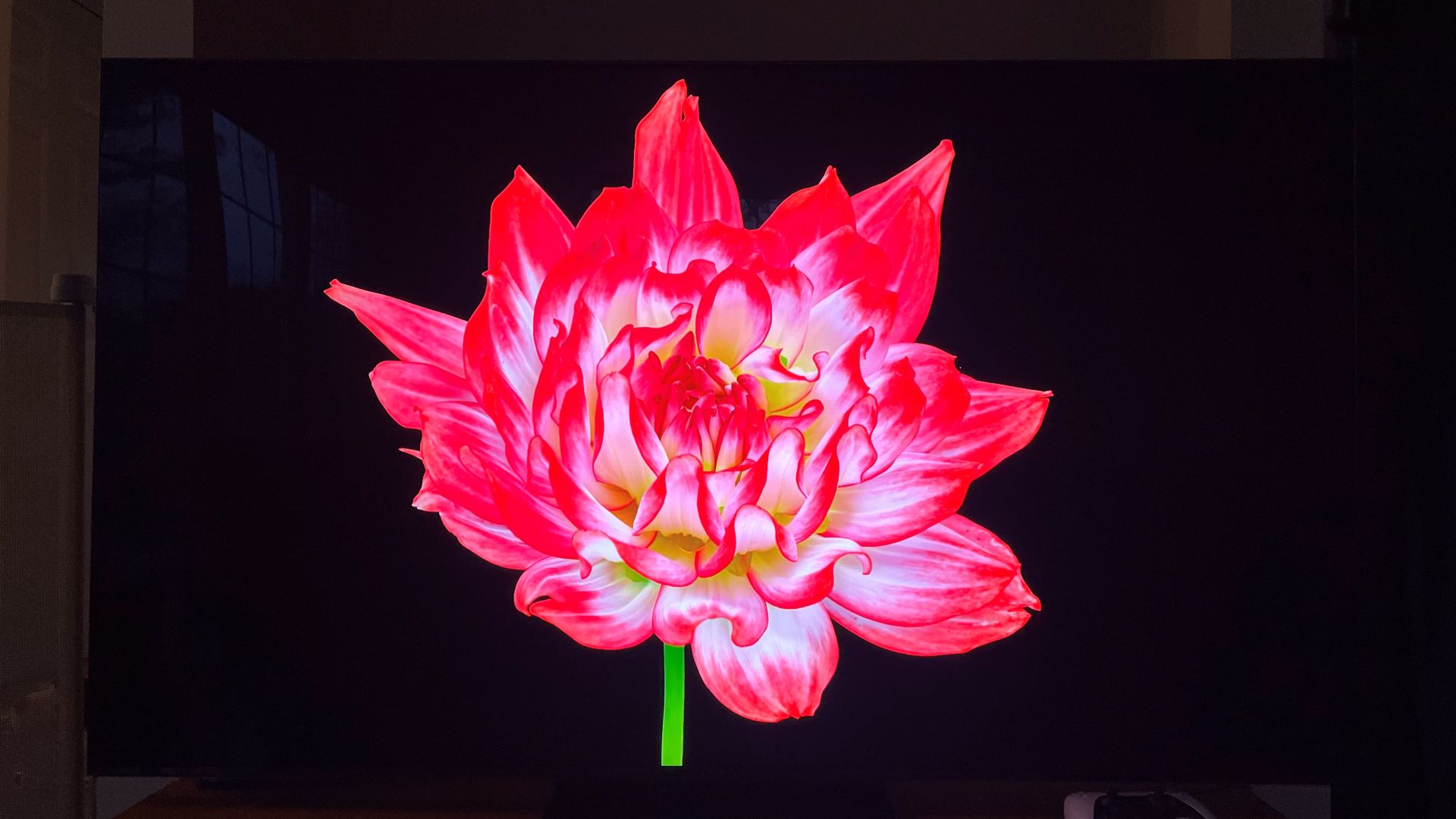


Specifications
Reasons to buy
Reasons to avoid
✅ You want great pictures without breaking the bank: The QM7K delivers impressively bright and contrast-rich pictures for the money.
✅ You need a gaming TV on a budget: Stacked with features including FreeSync Premium Pro and 4K 144Hz support, the QM7K covers nearly all the gaming bases at an affordable price.
❌ You watch in a super-bright room: While the QM7K's brightness is useful for bright rooms, we found its screen was reflective during our testing.
❌ You want the best built-in sound: The QM7K's sound is decent overall, but its bass is lacking and its soundstage is narrow.
The QM7K is superb value for money, providing a great stock of features, especially for gaming, and brilliant picture quality for an affordable price in a 75-inch screen.
During our testing of the QM7K, we were most impressed by how effective the new Halo Control technology effectively minimized backlight blooming (where a halo of light appears around bright objects against dark backgrounds), something that is no easy task for a budget-friendly mini-LED TV. The QM7K also delivered crisp images with great HDR on movies such as The Batman and Hero.
We found the QM7K to be "a treat for gaming" during our testing. A 13.1ms input lag and 4K 144z and FreeSync Premium Pro meant gameplay felt smooth even during chaotic games like Dead Island 2. At this size, the QM7K is a superb, budget option for gaming.
The QM7K's sound quality is solid overall, but bass and the soundstage are a little lacking, so those looking for a more cinematic experience from this 75-inch screen may need to get a soundbar as well.
But where the QM7K really shines is its value for money. At a 75-inch size, the QM7K has dropped below $1,000 before – a bargain for a TV with this much on offer. While the step-down TCL QM6K is available for cheaper, the QM7K delivers better picture quality and much higher brightness, we think the QM7K is worth paying the extra money.
Read our full TCL QM7K review
The best budget 75-inch TV in the UK


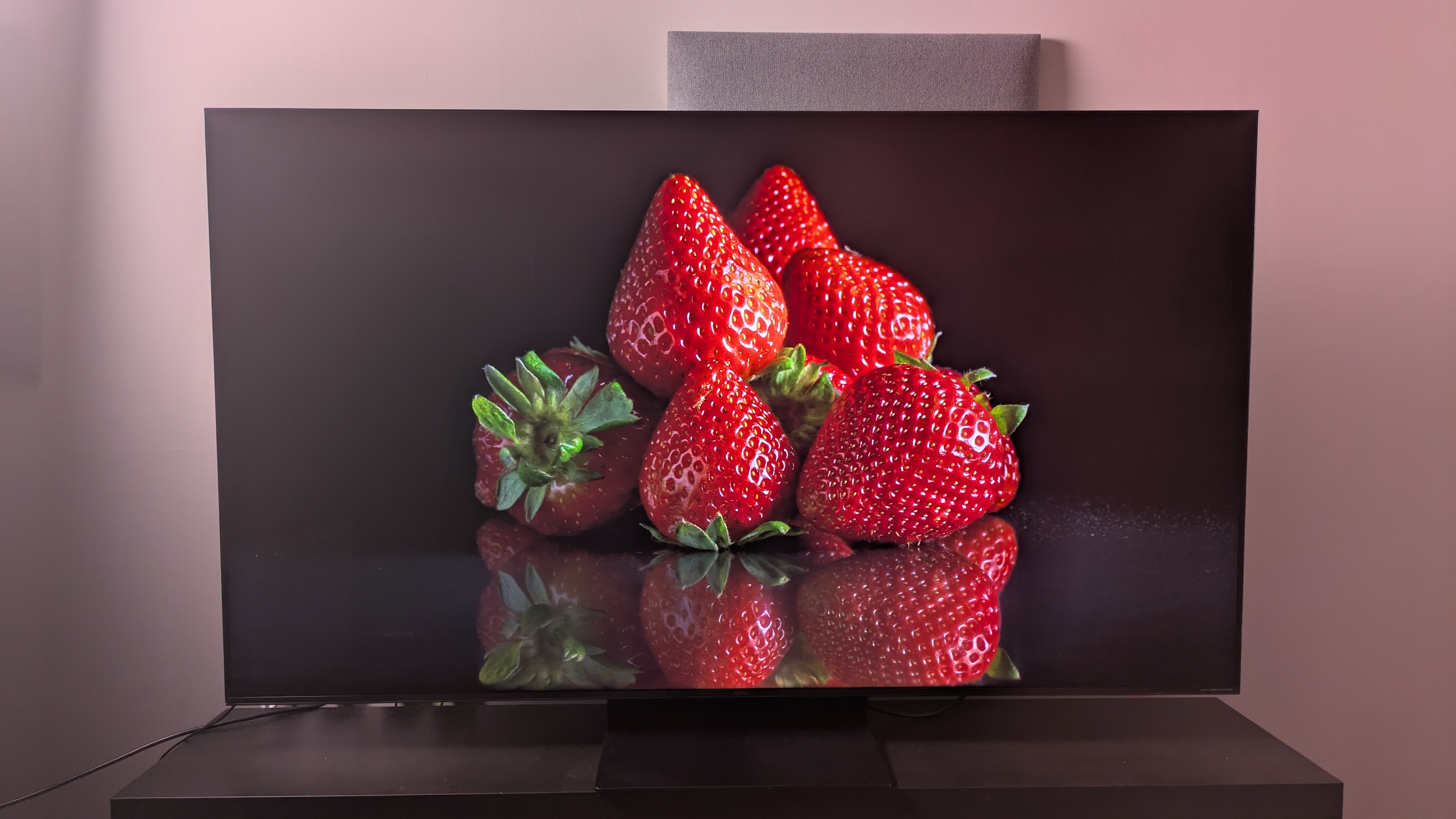
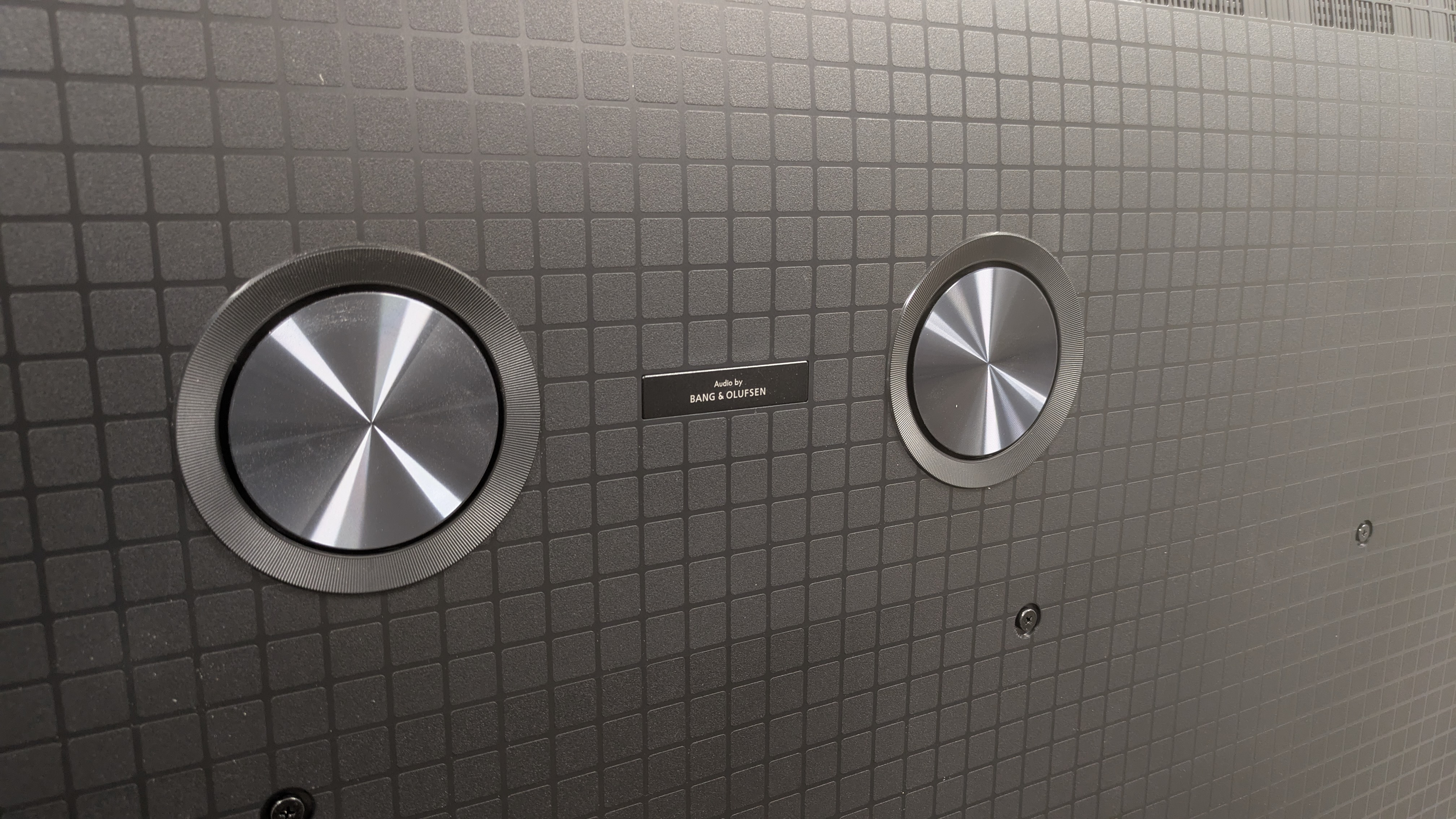

Specifications
Reasons to buy
Reasons to avoid
✅ You want a brilliant picture for the price: Despite its budget price, the C7K delivers bold colors and strong contrast in its pictures, with quality competing with much pricier sets.
✅ You want a budget big screen for gaming: The C7K has superb features for a cheap TV, including 4K 144Hz, FreeSync Premium Pro, Dolby Vision gaming and ALLM.
❌ You want a complete picture: The C7K's picture is very good overall, but its screen uniformity isn't perfect.
❌ You need great built-in sound: The C7K's sound is punchy enough, but limited by a restricted soundstage and lacking bass.
The TCL C7K is a brilliant TV if you're looking for a 75-inch screen on a budget. It delivers bold picture quality and excellent gaming features and performance at an affordable price for a 75-inch TV.
When I tested the C7K, I found its picture quality to be fantastic. Colors were its strong point, looking vivid and vibrant with animation such as Elemental and natural with real world movies such as Wicked. The C7K also demonstrated strong contrast and rich blacks, even in challenging movies I use to test TVs such The Batman and Alien: Romulus. Textures throughout viewing looked realistic and crisp as well, adding real depth to the C7K's picture.
I also enjoyed gaming on the C7K. Playing chaotic battles in Battlefield V felt smooth and responsive. It also comes with a great list of features including 4K 144Hz, FreeSync Premium Pro, Dolby Vision gaming and ALLM. For a gaming display at 75-inch, the C7K is fantastic if you're on a budget.
I found the C7K's sound to be decent overall during my testing, but found its lack of bass and narrow soundstage took some of the impact out of action-packed scenes such as the Batmobile chase from The Batman and the Darkstar test flight in Top Gun: Maverick.
Where the C7K does really shine is its value. You can pick up the C7K (also know as the Q7C at some retailers) for under £1,000: a superb price for a TV with these features in a 75-inch size. While it may not deliver the complete performance of more premium mini-LED TVs, such as the Samsung QN90F, the C7K is an excellent budget option at 75-inch.
Read our full TCL C7K review
The best mid-range 75-inch TV

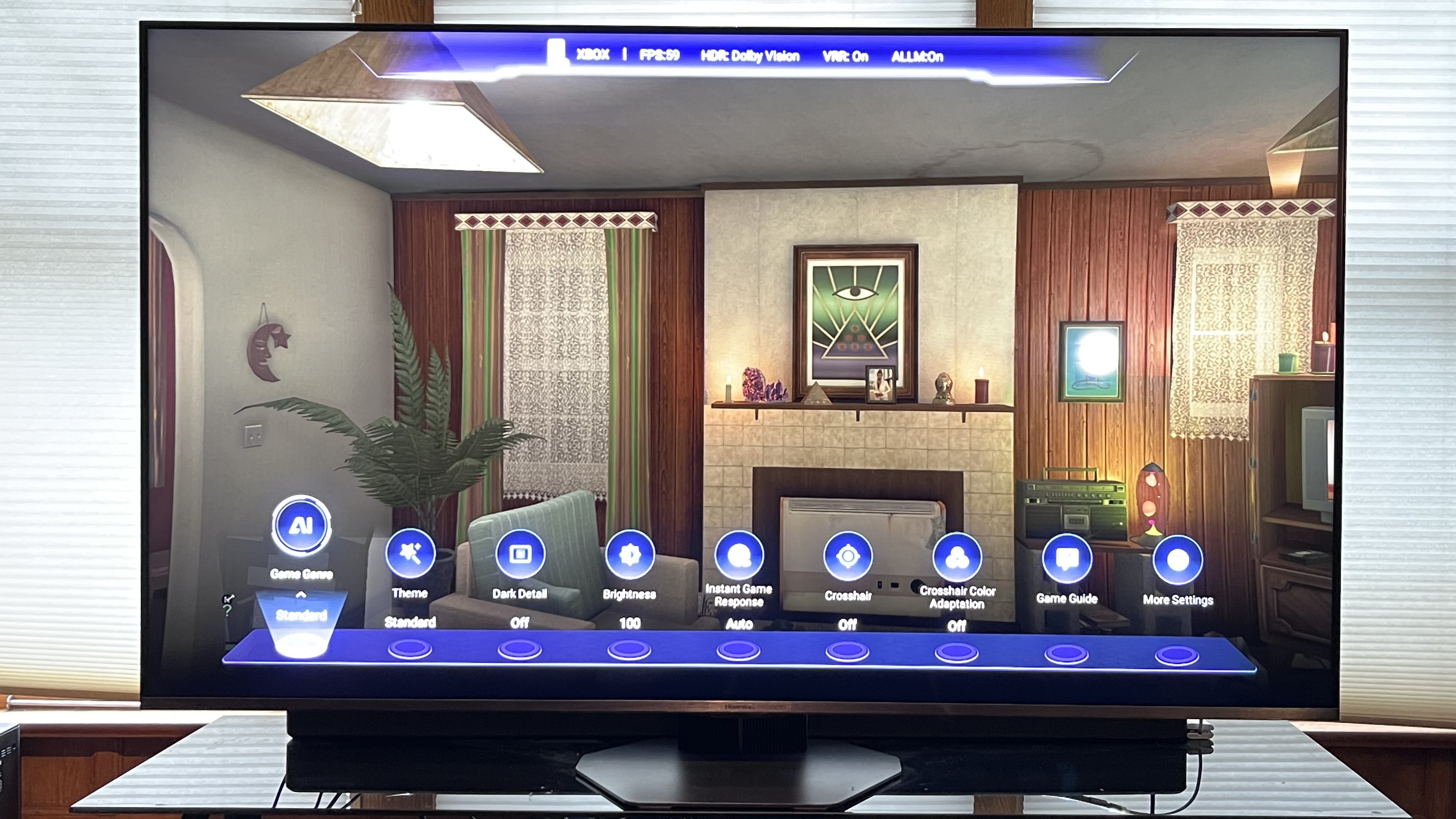

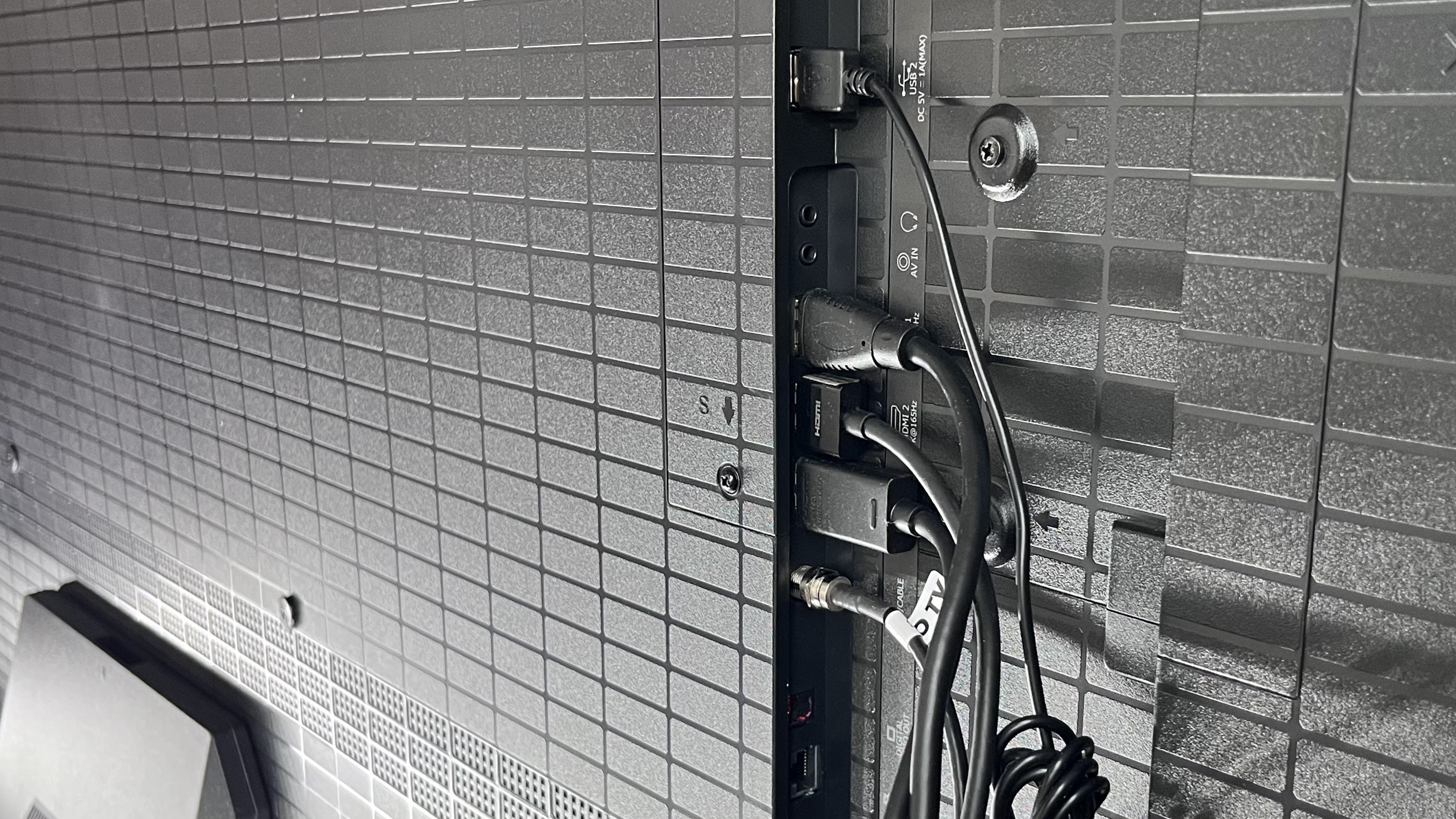
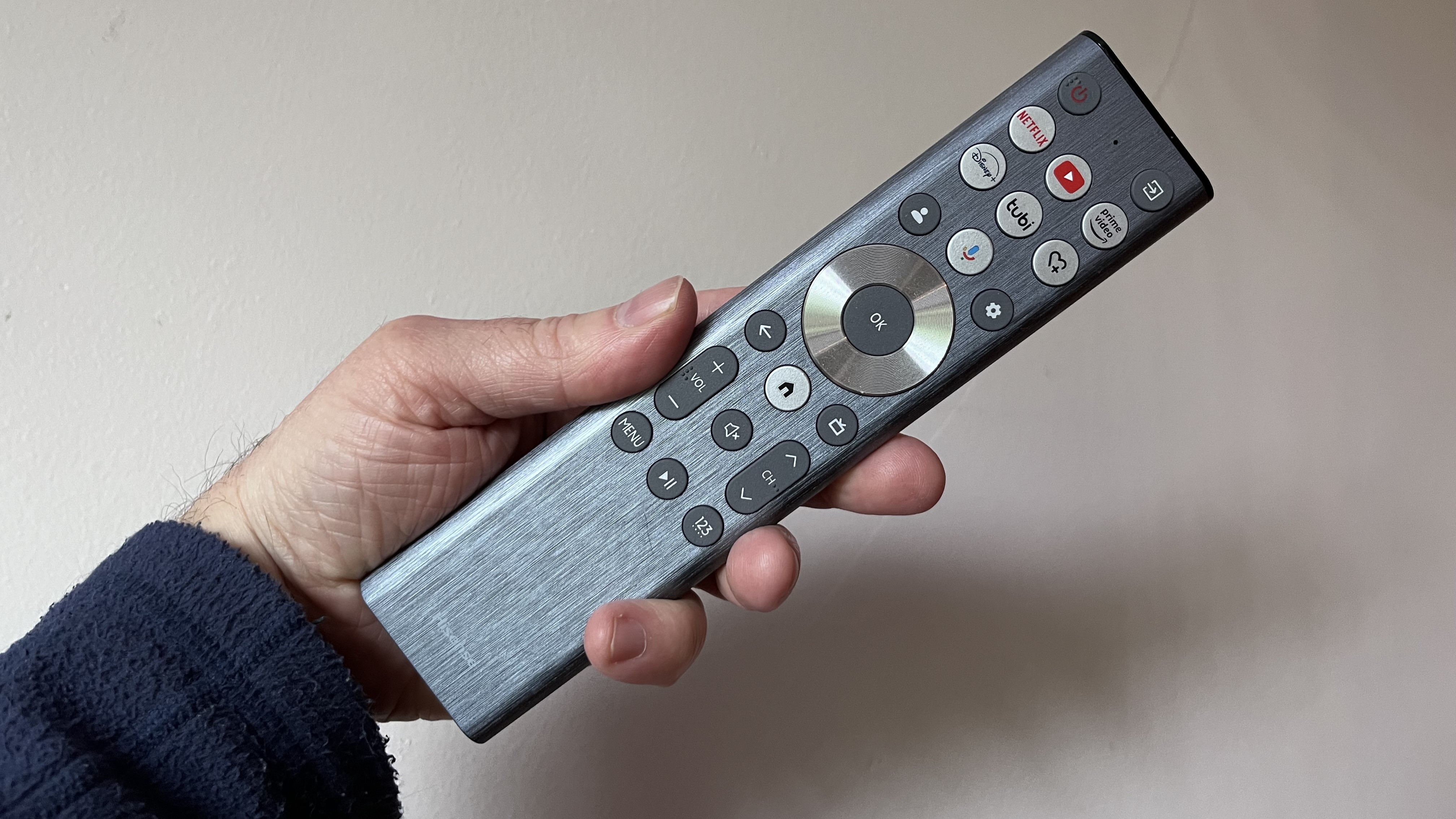
Specifications
Reasons to buy
Reasons to avoid
✅ You want a versatile TV: The U8QG looks excellent in both bright and dim conditions, meaning it's great for both daytime and home theater viewing.
✅ You want a comprehensive gaming TV: 4K 165Hz, VRR and a low 9.9ms input lag time mean the U8QG is a brilliant TV for gaming.
❌ You like watching in big groups: Picture quality suffers if someone isn't sat directly in front of the TV, so the U8QG isn't ideal for larger groups.
❌ You don't want a soundbar: The U8QG's built-in sound is mostly commendable, but bass rattle is distracting during intense movie scenes.
The Hisense U8QG is another comprehensive mini-LED TV that delivers exceptional brightness and is brilliant for gaming, for an extremely competitive price compared with rival mini-LED and OLED TVs.
When we tested the U8QG, we were most impressed by its local dimming capabilities which we noted has been getting every year. It meant dark scenes in movies and TV shows such as The Last of Us delivered strong contrast and powerful depth. Colors were also rich and thanks to the U8Q's high brightness (it hit 3,337 nits peak HDR brightness), it's perfect for watching sports in bright rooms. Those watching in big groups should note though that the U8QG's picture quality, especially contrast, fades when viewed off-center.
The U8QG is also an accomplished TV for gaming. It supports 4K 165Hz, FreeSync Premium Pro, Dolby Vision gaming and ALLM. It also has an ultra-low 9.9ms input lag time, competing with the very best gaming TVs from LG and Samsung. It does only come with three HDMI ports however, something to note for those with multiple devices you want to connect. They all support the gaming features I mentioned, at least.
Where we really rate the U8QG though is its value for money. The 75-inch model costs $1,399 / £1,699 / AU$2,999, which is an excellent price for a TV with the U8Q's performance and specs. The U8Q hits the sweet spot between rival OLEDs and premium mini-LEDs and cheaper mini-LEDs, which is why it's our pick for the best mid-range.
Read our full Hisense U8QG review
The best premium OLED 75-inch TV

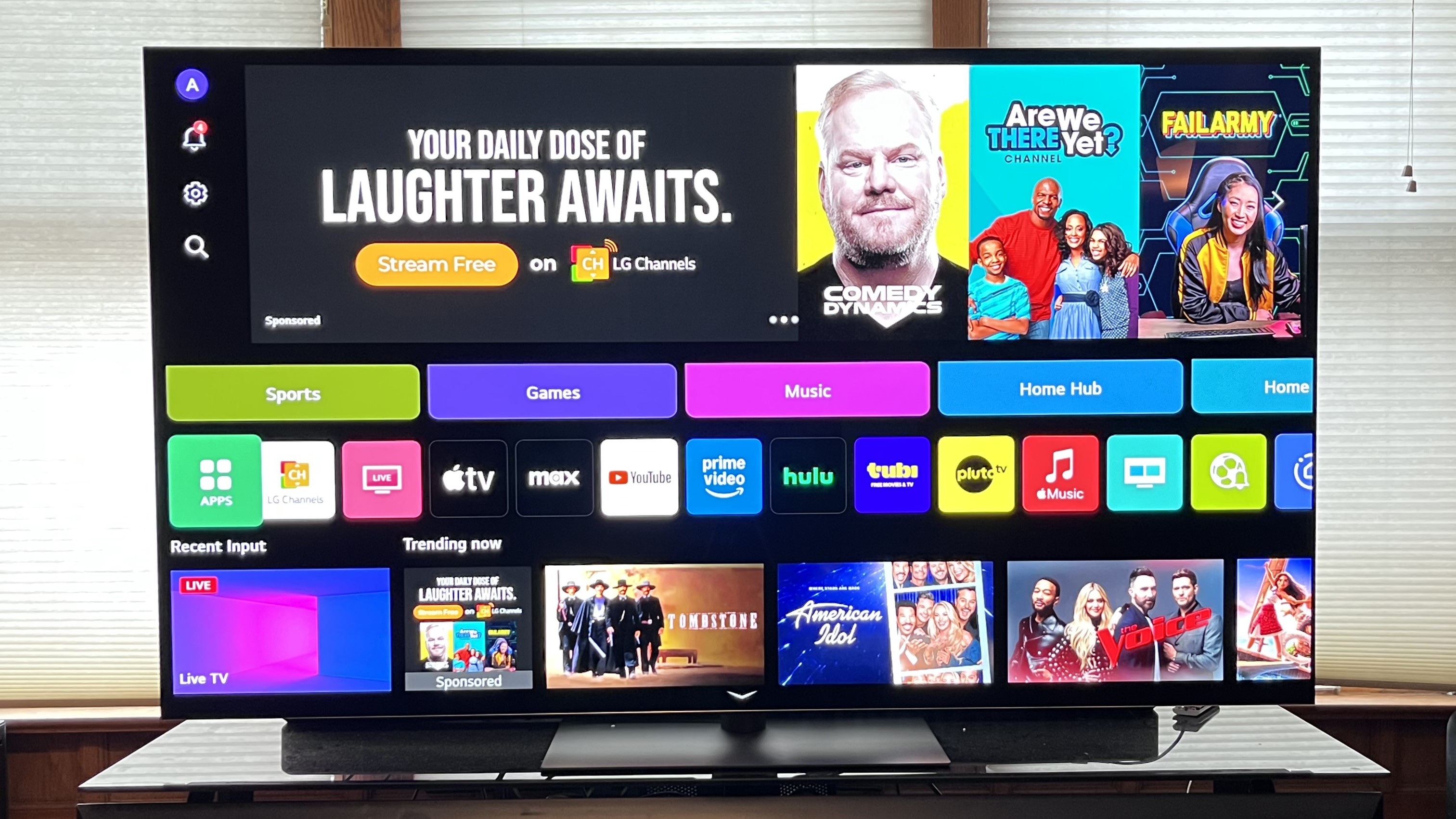
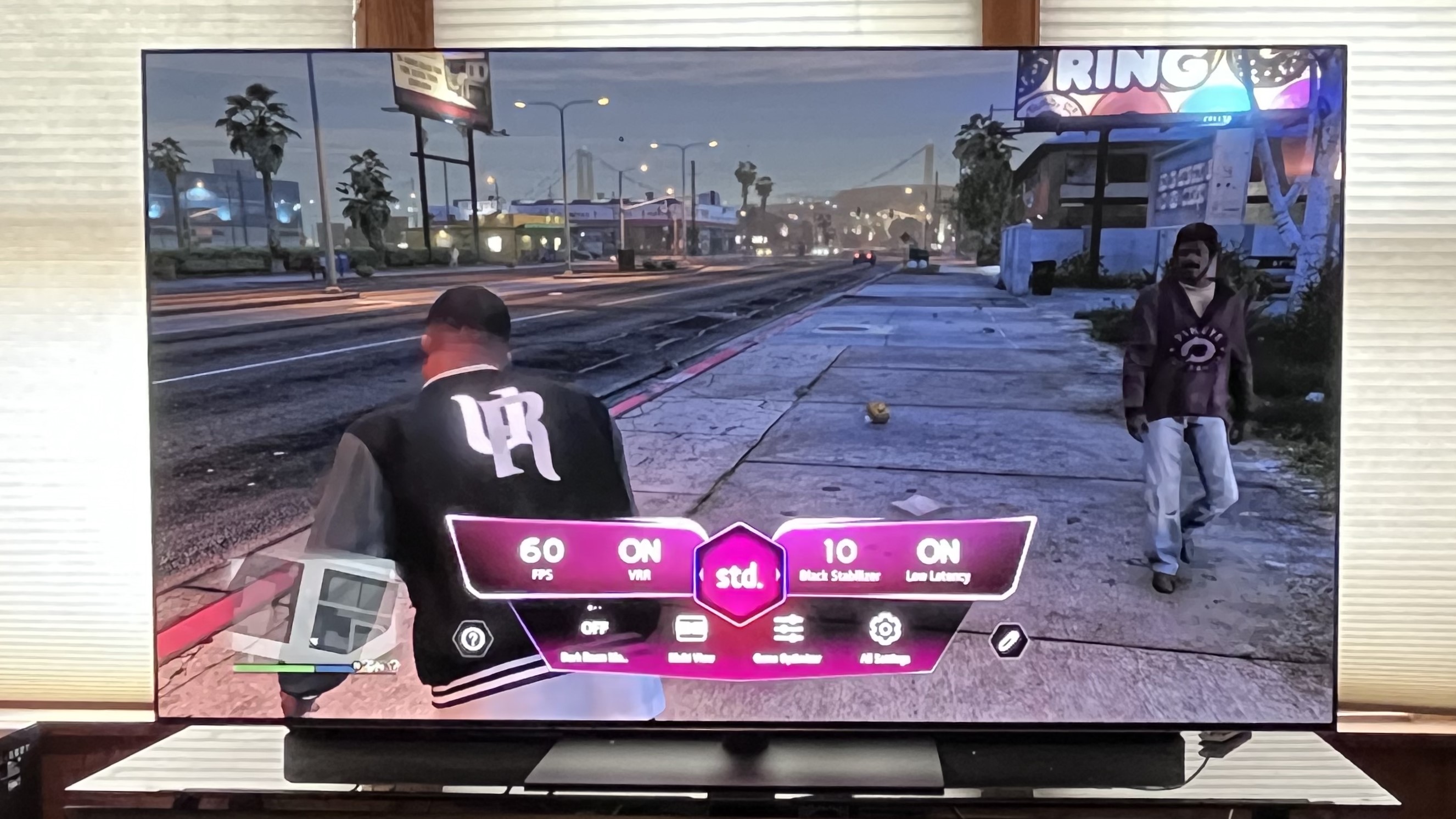
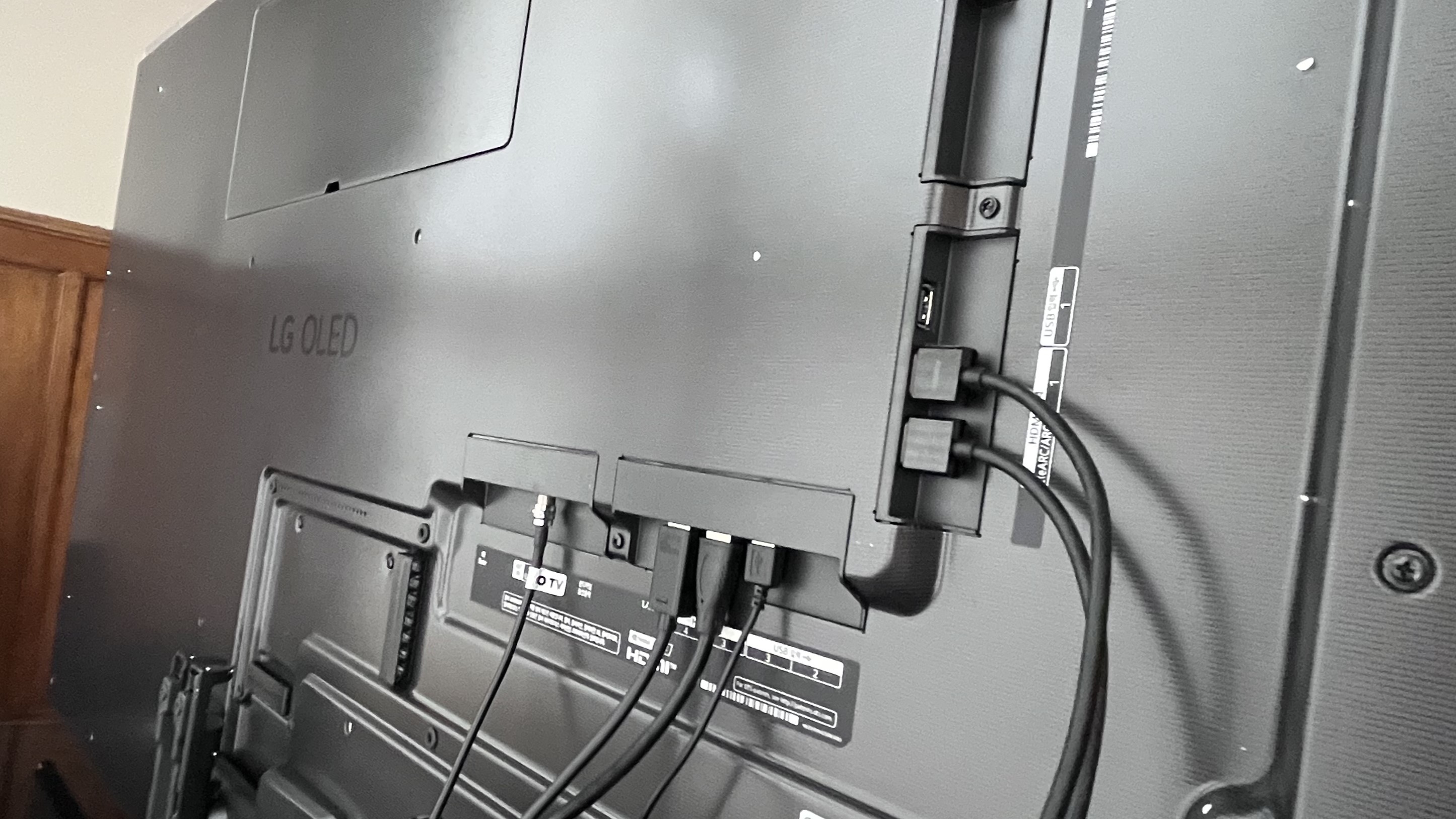

Specifications
Reasons to buy
Reasons to avoid
✅ You want a great OLED for gaming: With 4K 165Hz, full VRR, Dolby Vision gaming, ALLM and a 9.2ms input lag, the G5 is a phenomenal TV for gaming.
✅ You like to watch in bright rooms: The G5 has an incredibly bright picture for an OLED TV. It also has an effective anti-glare screen plus a Filmmaker Ambient Light Mode that adjusts the picture in brighter rooms without sacrificing accuracy.
❌ You don’t want to add a soundbar: This TV's 4.2-channel speakers deliver decent sound, but an external soundbar is recommended for a complete experience.
❌ You want HDR10+ high dynamic range support: The G5's lack of HDR10+ high dynamic range support could be an issue if you stream from Netflix or other services supporting that format.
The LG G5 faces stiff competition from other flagship OLEDs from Samsung, Sony and Panasonic, but thanks to its high brightness and competitive price, its the best choice for an OLED TV in a 77-inch size.
During our G5 testing, we were blown away by how good dark scenes with high contrast, such as the Season 2 finale of Severance, looked in bright rooms thanks to the G5's high brightness (it hit 2,268 nits peak HDR brightness in Filmmaker Mode, which is phenomenal for an OLED) and effective anti-reflection screen. It also delivered rich colors and crisp textures, which made it stand out in our four-way flagship OLED showdown.
The G5 is one of the best gaming OLED TVs on the market. It has a full suite of features including 4K 165Hz, FreeSync and G-Sync, Dolby Vision gaming, HGiG and ALLM, all supported across four HDMI 2.1 ports. An ultra-low 9.2ms input lag time (activated in the Game Optimizer settings) means gameplay is responsive and smooth, even in frenetic games like Battlefield V which we tried out in our testing.
The G5 does come with a premium price tag, as you'd expect for an OLED at this size, but priced at $3,499.99 / £3,199 / AU$6,995 officially, the G5 is the most competitively priced OLED at this 77-inch size, while also offering the most complete set of features, highest brightness and best gaming performance. That's why it's our pick for best 77-inch OLED offer some strong competition.
Read our full LG G5 review
The best 75-inch TV for bright rooms
Specifications
Reasons to buy
Reasons to avoid
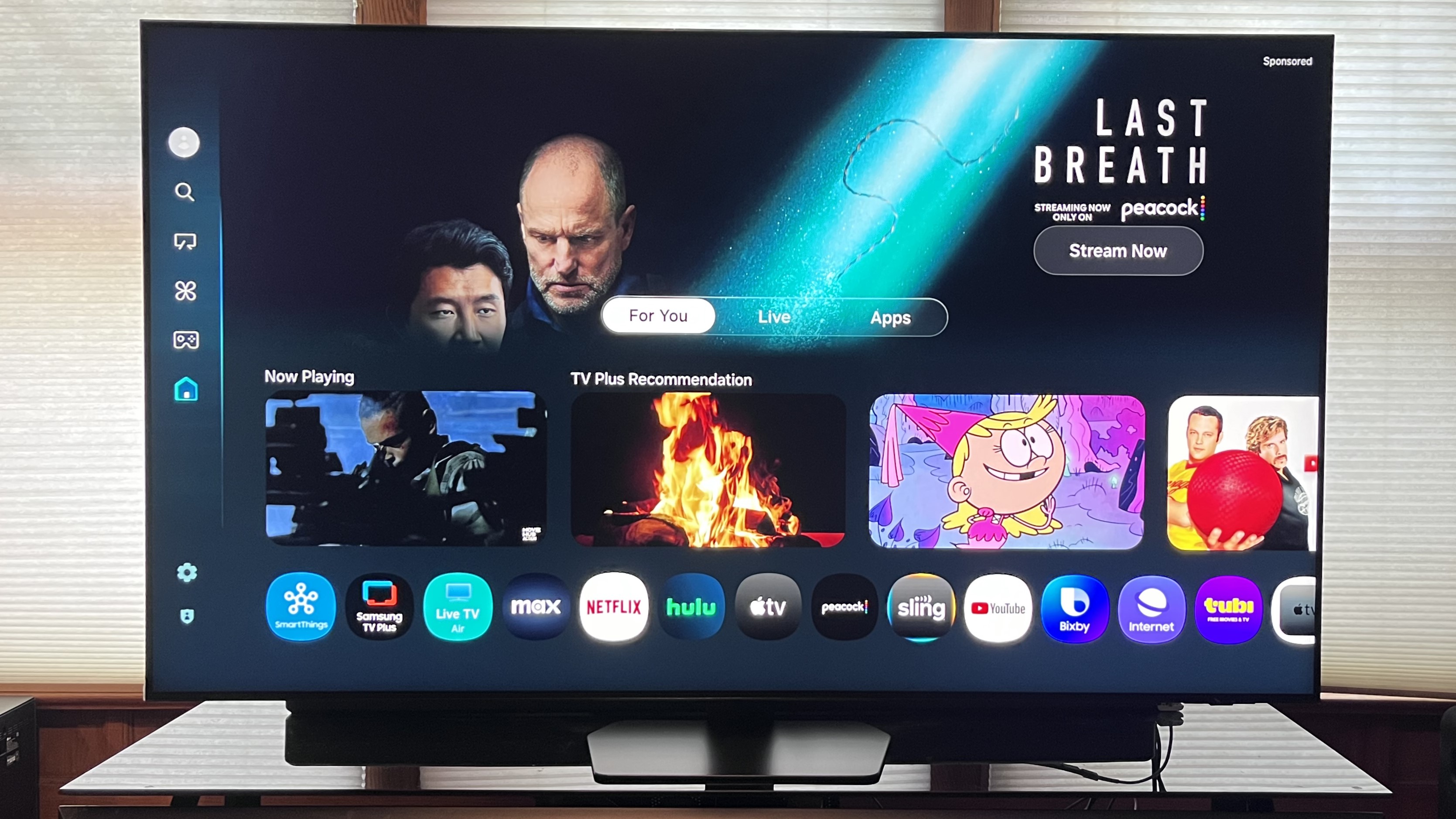

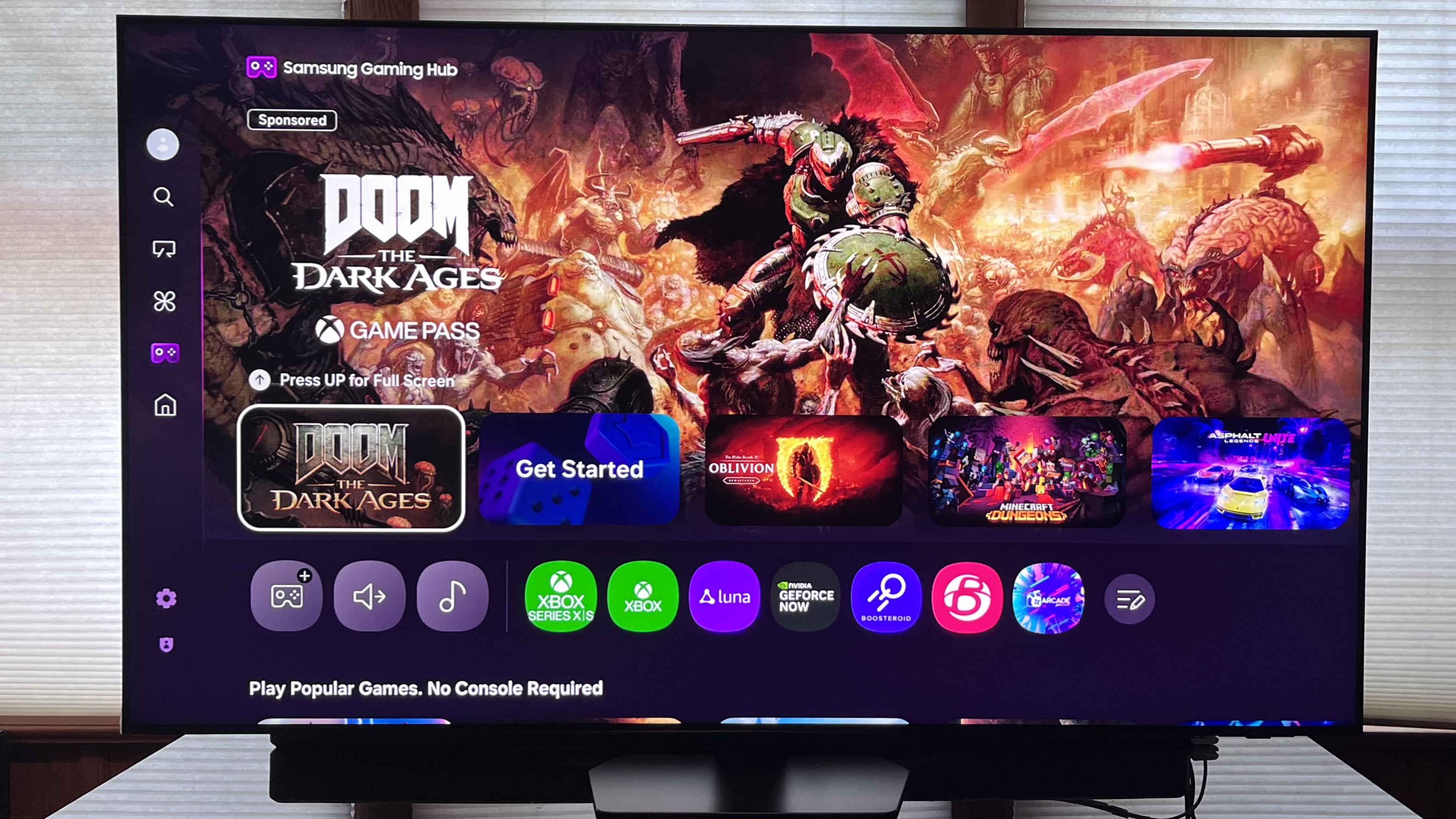
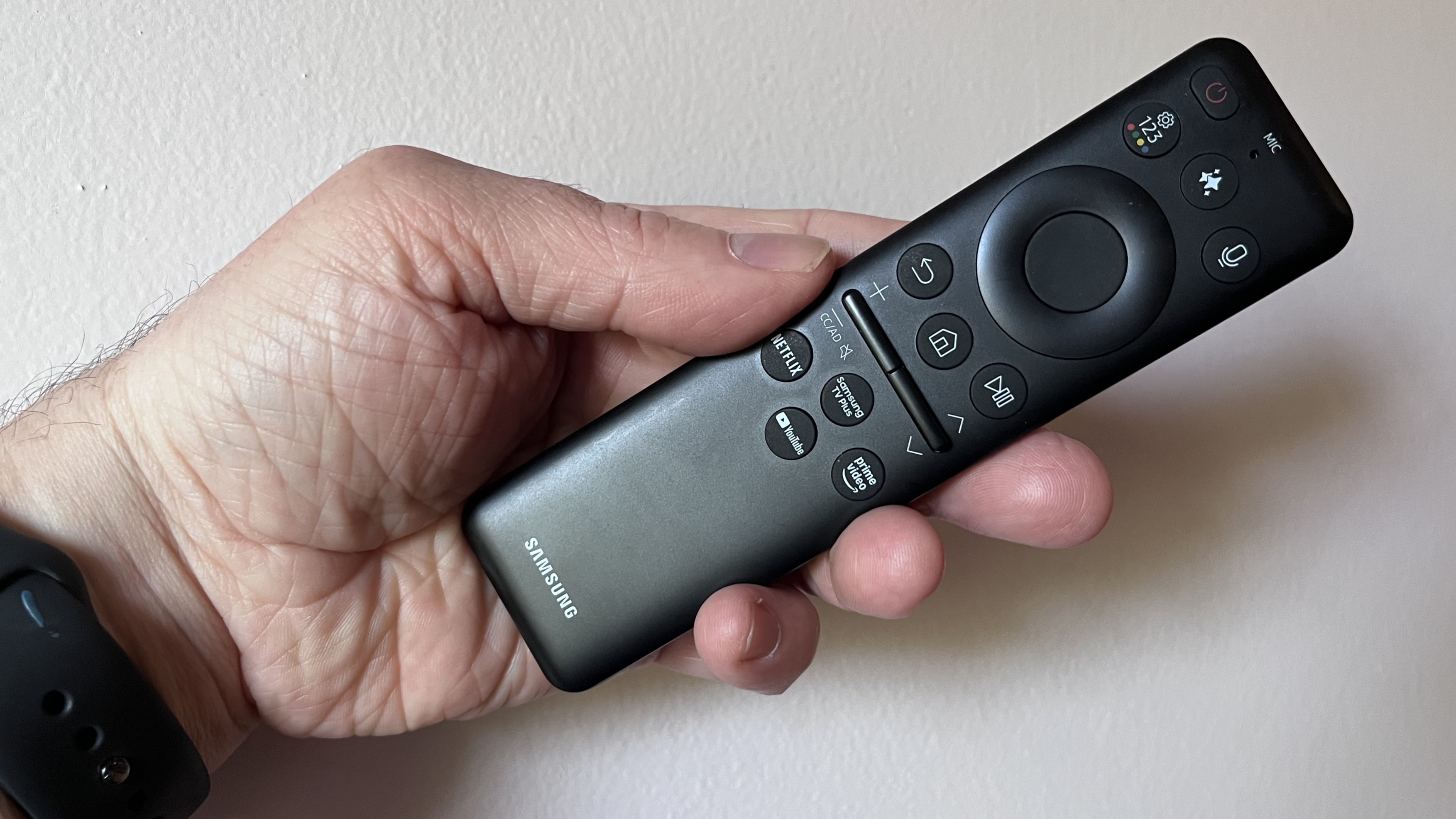

✅ You have a bright viewing environment: The QN90F's high brightness and upgraded glare-free screen keep performance high in bright rooms.
✅ You watch a lot of sports: The QN90F's high brightness, wide viewing angle and great motion handling make it an ideal TV for sports fans.
❌ You want the best value mini-LED: Mini-LED TVs from Hisense and TCL can provide similarly great performance for less money.
❌ You want Dolby Vision HDR: Same as with other TVs from Samsung, the QN90F's high dynamic range support is limited to HDR10+, HDR10, and HLG.
Watching TV in a bright room can be challenging, even for some brighter mini-LED TVs. The Samsung QN90F however doesn't have this issue, thanks to its high brightness levels and Glare Free screen that make daytime viewing easy.
When we tested the Samsung QN90F, we were impressed by its refined local dimming, noting that there seemed to be almost no backlight blooming even in shadow-heavy scenes from movies such as Oppenheimer. The QN90F also had rich colors, but it really shines with its brightness and anti-reflection capabilities. During daytime viewing, we noted no reflections and even putting a light directly in front of the screen, any light was diffused.
The QN90F is also a brilliant TV for sports, thanks to its high fullscreen brightness, excellent motion handling and Glare Free screen.
Gamers will also be pleased with the QN90F's features and performance. It supports 4K 165Hz, VRR (including Nvidia G-Sync for the first time), ALLM and HDR10+ gaming. Its ultra-low 9.5ms input lag means gaming feels responsive and smooth, even in the most fast-paced games.
The QN90F is pricier than other mini-LED TVs such as the Hisense U8QG and TCL QM7K/C7K on this list but it provides a more premium experience. And while its brightness doesn't hit the numbers by some of these TVs, the QN90F is still our pick for the best 75-inch TV for bright rooms thanks to its combination of brightness and its anti-reflection screen. If you're looking for a TV for a bright room, this is the one we recommend.
Read our full Samsung QN90F review
How to choose the best 75-inch TV
Is a 75-inch TV too big for a living room?
While many promotional and marketing images might lead you to believe that a 75-inch TV is too big for a living room, this really isn't the case for lounges of an average size.
So long as you have a table or stand that's accommodating to the TV's large size, and create adequate space for peripherals like soundbars and speakers, a 75-inch TV won't take up as much real estate as you might think. And if you're thinking of mounting a 75-inch TV on wall using one of the best TV wall mounts, you'll also want to consider how much space it'll take up on the wall.
Do keep in mind that you may have to rearrange the room around the TV for the best possible viewing experience, however.
How far should you sit from a 75-inch TV?
For optimal viewing with a 75-inch TV, we'd recommend sitting roughly 50-60 inches away from the screen for a fully immersive experience. Rearranging the furniture in your room to accommodate this will help, and it could be as simple as slightly adjusting your couch.
How much does a 75-inch TV cost?
The very best 75-inch TVs can vary wildly in price. The LG G3, for example, will run you an eye-watering $3,500 / £2,770 (around AU$5,400), while Hisense present a much more affordable option in the U8K at $1,300 (around £1,000 / AU$2,000).
The difference in price here seems drastic considering both examples offer excellent picture quality. It all depends on how much you're willing to pay for extra bells and whistles and design sensibilities, such as the G3's wonderfully thin design and best-in-class options for gaming.
Do be extra wary about TV sales that sound too good to be true, though. If you see a 75-inch 4K TV for around $600 / £600, it's probably going to let you down in terms of picture performance with bad backlighting and cheap edge-lit LED panels that produce poor black levels and contrast.
During key sales periods such as Black Friday, of course, those pricing expectations are a little different, so in any case it's worth paying attention to how much a 75-inch TV was at launch.
Some Hisense TVs can have a high launch price and quickly undercut it for a sense of value, and often you can get a good discount at least a few months after release, but in general you should be looking for the largest discount compared to a previous price, rather than just the cheapest 75-inch TV out there. And if you're low on cash, you should probably be opting for a decent 65-inch TV, rather than a half-baked 75-inch one.
Once you get to a 75-inch size, too, 8K TVs really become a smart investment too. That's because the greater number of pixels over 4K (33 million rather than eight million) ensures far greater detail at that size. A 55-inch 8K TV doesn't really make much of a difference, but a 75-inch 8K TV certainly does.
What’s the difference between an OLED 75-inch TV and an LED one?
If you want the quick answer, OLED TVs offer superior picture quality at a higher price than LED TVs. That really is the abbreviated version, though. While we generally rate OLED as the premium television technology, LED sets have their strengths, too.
For one thing, the best LED TVs are generally brighter than OLED panels, which makes them better suited for daytime viewing (particularly in rooms that get a lot of sun). LEDs are also less reflective than their OLED counterparts, which again, makes them better suited for watching content in bright conditions.
Yet when it comes to contrast, OLED is king. These TVs are self-emissive, meaning they can both emit their own light without the need for a backlight and also turn off their pixels during dark scenes; leading to perfect black levels. By contrast, LED TVs still very much rely on backlights, which means their blacks are nowhere near as convincing as OLEDs.
LED backlights use dimming zones to increase or lower the brightness of sections of the screen. The more zones, the more effectively an LED TV can dim the darker parts of an image. Still, even mini-LED TVs, which have many more dimming zones than LED sets, still can’t come close to matching the infinite black levels of OLED.
Because the difference between the brightest parts of an image and the darkest areas are far more pronounced on an OLED TV than an LED TV, contrast levels on the former produce far more vivid pictures - especially when watching content at night.
OLED TVs are also closing the brightness gap on the best LED TVs thanks to quantum dot technology (Samsung started this trend with its QD-OLED sets). The likes of LG and Panasonic also have their own solution with MLA (Micro Lens Array) panels, which are decidedly brighter than old school WOLED screens.
Even the best and brightest OLED TVs are far from flawless, though. OLED burn-in is a type of screen defect that has existed since the first OLED TVs hit the mainstream market in the early 2010s. It manifests as a sort of permanent on-screen shadow that can be a result of leaving a static image on your display for multiple hours.
Though modern OLEDs have features that can help reduce this issue - like timed screensavers and pixel cleaning cycles - burn-in still exists if you’re careless with your OLED. By contrast, screen-burn is much less likely to occur in modern LED TVs.
Ultimately, OLED is definitely the superior technology than LED, but these OLED TVs are normally considerably more expensive and still aren’t without their flaws.
What should I look for in a 75-inch TV for gaming?
No matter what size of TV you’re looking to buy, be it a 42-inch set for your bedroom or a massive 75-inch television, if you’re a PS5, Xbox Series X or Nintendo Switch owner, you want a TV with a dedicated Game Mode.
Luckily, most mid- and high-end TVs have these picture presets that compared to other modes, drastically reduce screen response times (which are measured in milliseconds). The best gaming TVs are normally made by LG and Samsung, as they usually have the fastest response times - anything between 10-15ms is more than quick enough to enjoy your favourite titles in super-smooth style.
When it comes to the best 75-inch TVs for gaming, LG currently holds the crown thanks to the company’s trademark ‘Game Optimizer’. This console-focused group of settings has its own dedicated dashboard, and is designed to reduce input latency so that games feel ultra responsive.
While all the big TVs makers have some fashion of a game mode, LG’s solution is definitely the best at time of writing. Game Optimizer provides a feature-packed buffet of options designed to make games as responsive as possible. These include VRR (Variable Refresh Rate), ALLM (Automatic Low Latency Mode), Nvidia G-Sync and AMD FreeSync Premium.
What do these features do? In the case of VRR, it lessens the visual impact when games drop frames, leading to smoother, more consistent gameplay. As for G-Sync and FreeSync, Nvidia and AMD’s tech syncs the frame rate per second of a game to match your TV’s refresh rate, making FPS dips tough to spot unless you have amazingly keen eyes.
Is it worth upgrading from a 65-inch TV to a 75-inch?
This question fundamentally boils down to how much space you have to spare in your lounge/living room. If you’re lucky enough to have a huge entertainment area, and you can afford a bigger TV, then we say the upgrade to a 75-inch set is definitely worth it if you’re an avid movie watcher/gamer.
10-inches more may not sound massive, but the effect can be transformative. For context, the jump up from a 65-inch TV to a 75-incher is a substantial 33%. That’s a whole lot of extra screen real estate when you’re binging your favourite shows on the best streaming services. If you want to increase your viewing immersion, there’s no better way than by upgrading to a larger TV.
Feeling extra flush? Consider going even bigger and adding a couple of extra inches with a 77-inch TV. Some manufacturers - like LG with its OLED range - actually don’t tend to manufacture 75-inch screens, so if you want a TV like the LG C4 OLED, your options are either 77-inches or an almost absurd 83-inch model if 65” and below is too small for your tastes. If you do decide to go for a 77-incher over a 75” TV, that’s 40% more screen area than a 65-inch panel.
Whether the upgrade is ultimately worth it once again comes back to your personal situation. Living in a one bedroom apartment with limited space? Unless you want your television to completely dominate your front room, a 65-inch TV (or smaller) is probably the more sensible option. Yet if money isn’t an issue and your lounge is the size of an aircraft hanger, by all means go the 77-inch route. That extra screen size really can be a game-changer.
Best 75-inch TVs: comparison charts
Below is a comparison chart for all the TVs featured in this guide, looking at the four main areas we conduct objective tests on for each TV: brightness, HDR color gamut coverage, picture accuracy and input lag.
How we test the best 75-inch TVs
We test the TVs we selected for this best 75-inch guide not just on picture, but on every aspect including gaming performance, smart TV platform and menus, ease of use, built-in audio and even the overall physical design. We'll test out the features within the TV to make sure they're up to scratch and reflect this in our reviews.
75-inch is a big screen so you're often going to pay a premium for the very best, but we also look out for those TVs that give you value - performance without the price tag, so in this guide we've included TVs to suit every budget by testing across a wide range of prices.
We always strive to test these TVs with a variety of sources including Blu-ray, streaming, live TV, lower-resolution programs and movies and more so that we can fully test the TVs picture quality across the board, not just on the best possible picture.
Some of our reviewers will be testing with different equipment and in different conditions, but we will always aim to make this clear and to be as fair and as consistent as possible.
While subjective test are important, we also test TVs using specialized equipment. The equipment consists of a colorimeter, a test pattern generator and Portrait Displays' Calman color calibration software to record the results.
While we will test TVs on multiple measurements, there are four key test we can conduct that feature in our published benchmark results, which are featured in the tables underneath each entry above.
These four key areas are brightness, HDR color gamut coverage, picture accuracy and input lag. You can see a full breakdown of how we test TVs at TechRadar at the link, but below we've put a summary of each aspect.
Brightness
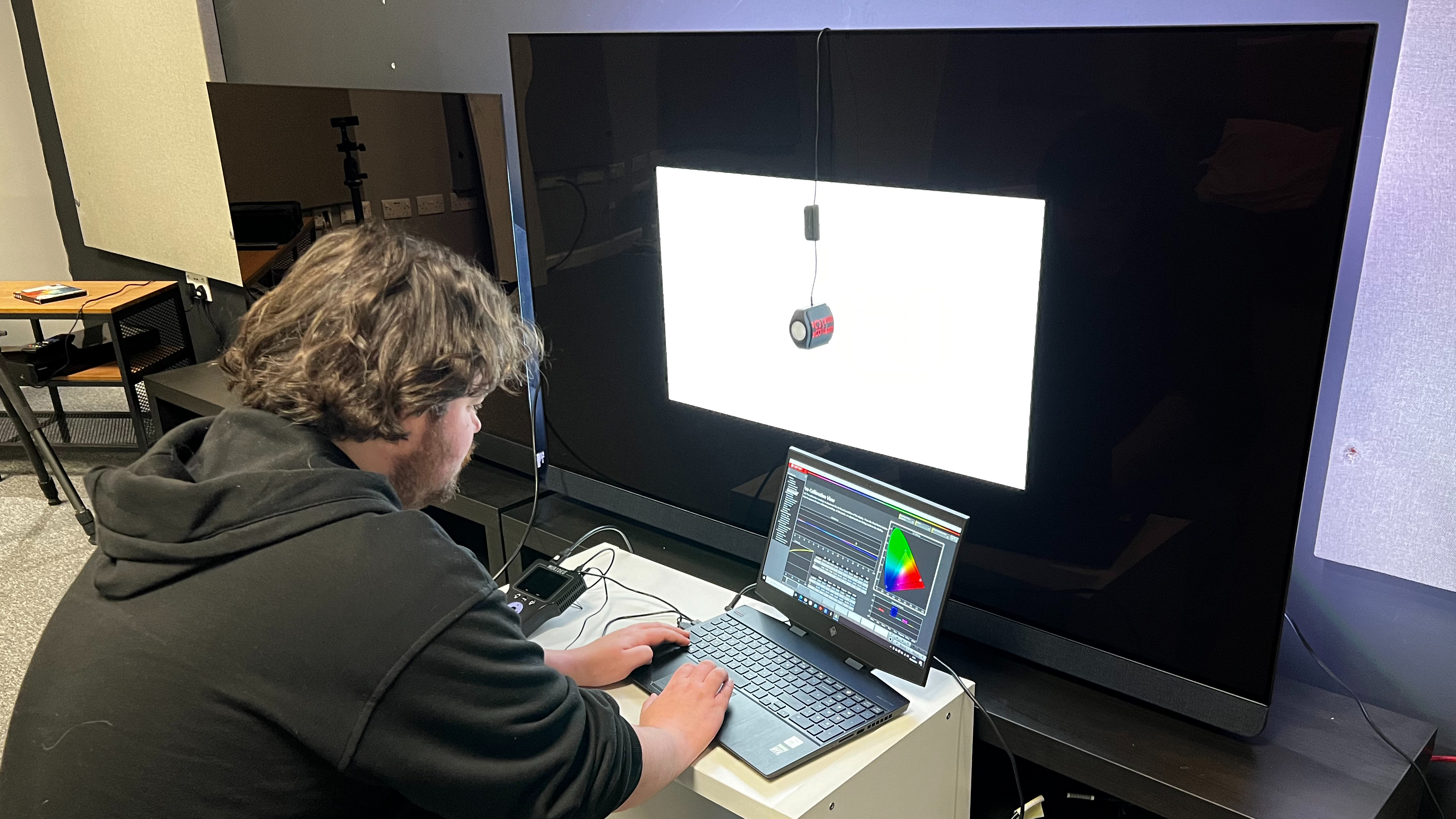
When we measure a TV's brightness, we focus on two key areas: peak and fullscreen brightness. Brightness is measured in nits and when we test brightness, we use white window patterns in sizes 1-100%, with peak being 10% and fullscreen being 100%. We also analyze brightness in both SDR and HDR.
Peak brightness will tell us how highlights will look on a screen, particularly in HDR. Think of the sun on a horizon or a torch in a dark scene - peak brightness will give us an idea of how these types of highlights will look on screen.
Fullscreen brightness is important for telling us how a TV will retain and display brightness, and also how it will handle bright viewing conditions and how it can handle reflections. Mini-LED TVs tend to have the highest brightness and are best suited for brighter rooms.
Color gamut
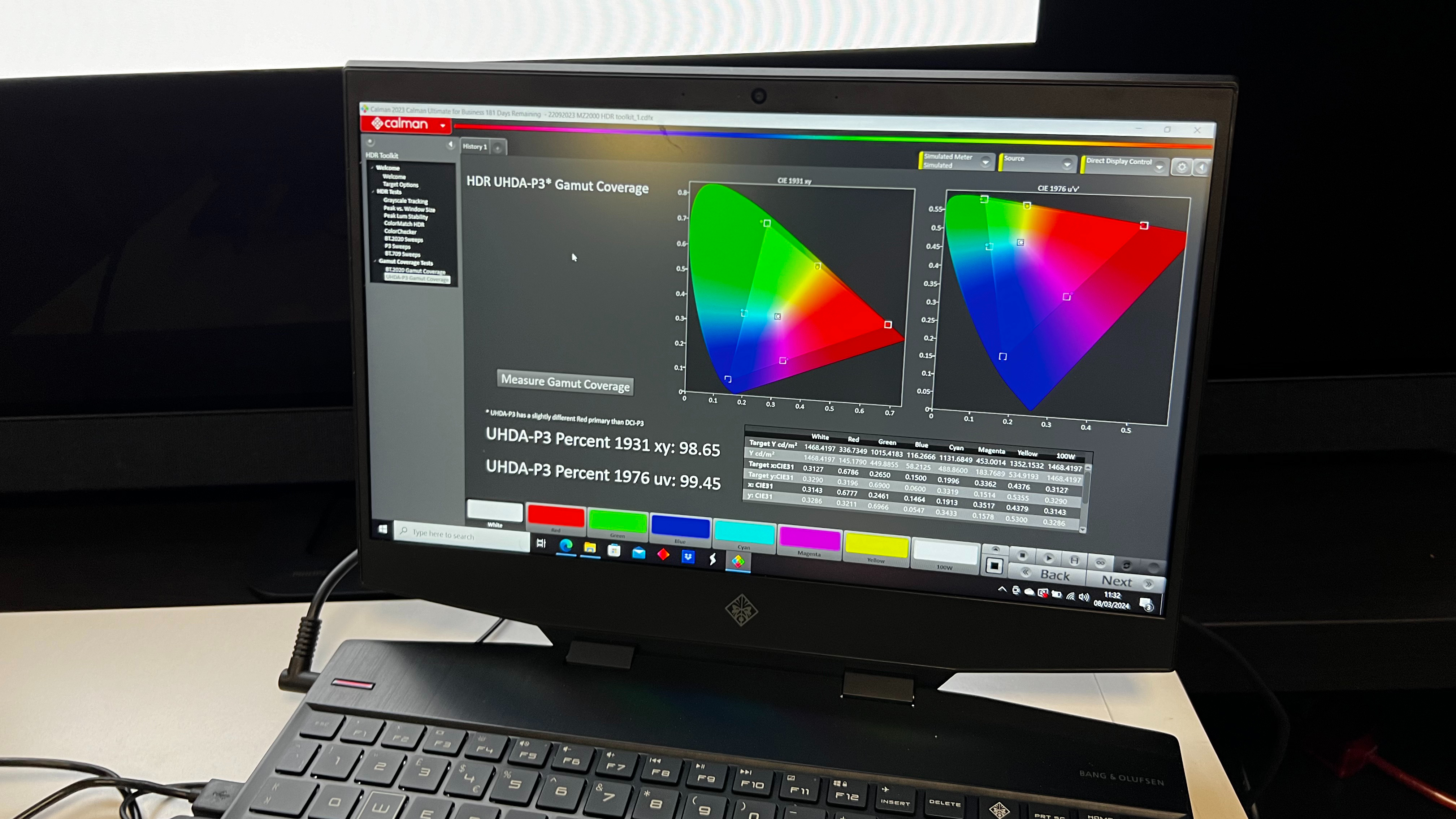
A TV's color gamut refers to how wide a range of colors it can show, with the results when measured shown in a percentage. The higher a TV's color gamut coverage, the more colors it can show. When we measure color gamut coverage, we focus primarily on two color spaces: UHDA-P3 (also known as DCI-P3), which is used when mastering digital cinema releases and 4K Blu-ray, and BT.2020.
When we measure HDR color gamut coverage, we're looking for a result of over 95% in the UHDA-P3, while expecting 70-80% in the BT.2020 color space, although this number is increasing with more TVs hitting over 80% in recent years.
We've seen some milestone results in 2025 with color gamut coverage, with several OLEDs hitting 100% of UHDA-P3, while the Hisense 116-inch UX hit a remarkable 92% of the BT.2020 space, the highest we've recorded to date.
Picture accuracy
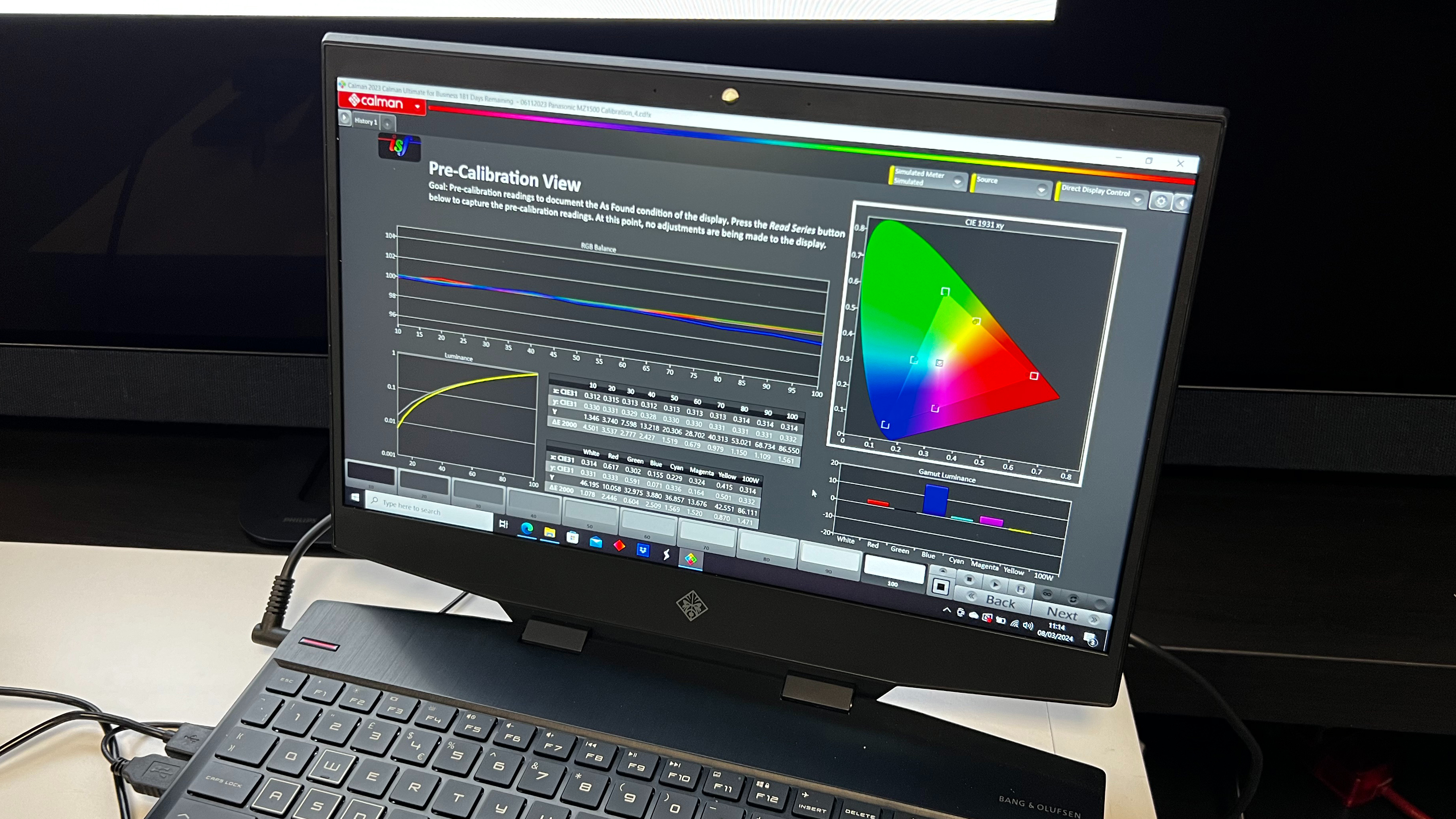
Another area we test is color and grayscale accuracy. To do so, we run through a cycle of test patterns and then take an average of the Delta-E (the margin for error between the test pattern source and what's shown on screen), hoping for a result lower than 3 (the number that's accurate enough that differences can't be discerned by the human eye).
To test color accuracy, the TV cycles through red, green, blue, yellow, magenta and cyan patterns. For grayscale, 0-100 patterns are analyzed, with 0 being black and 100 being full white.
Input lag
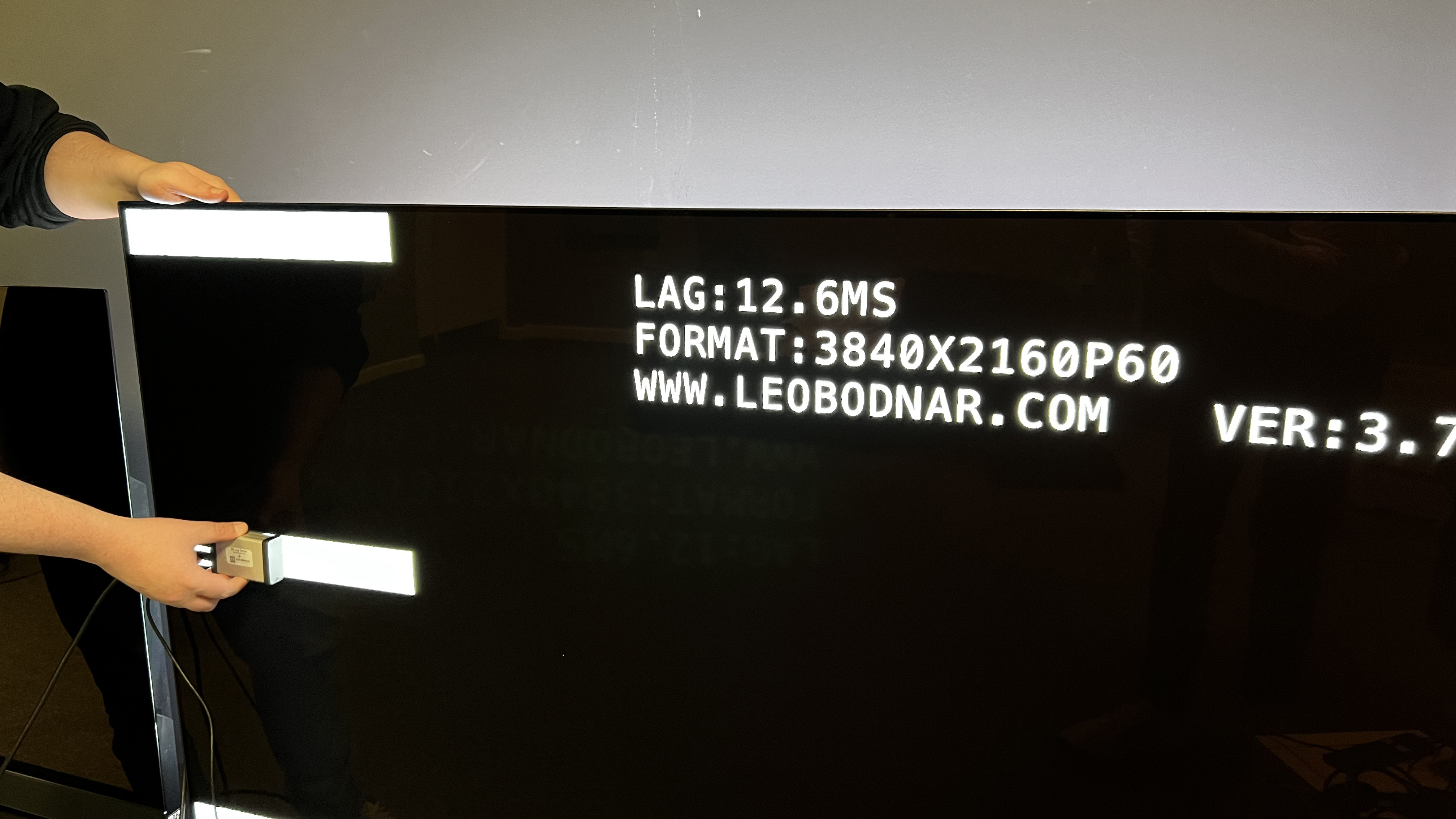
Input lag refers to the time delay between a signal source being sent to a display and when that source shows on screen. Input lag is most important for gaming, with a shorter input lag resulting in better performance.
Input lag is measured in milliseconds (ms) and when we measure a TV's input lag, using a Leo Bodnar 4K HDMI Input Lag Tester, we make sure to put the TV into its Game mode, or activate its game settings, to deliver the best results. Ideally, we're hoping for below 15ms, as this is the threshold most gamers are looking for.
More 75-inch TVs we've tested
This is a listing of TVs we've reviewed that are available in a 75-inch size but didn't quite make the list above.
Panasonic Z95B: The Panasonic Z95B is a home theater powerhouse, delivering refined, natural picture quality and punchy built-in sound. While we highly rated the Z95B in our flagship OLED showdown, the 77-inch model is significantly pricier than the LG G5, making the latter the better value pick for the best premium OLED TV. Read our full Panasonic Z95B review
LG B5: The LG B5 is an excellent budget OLED in a 77-inch size and delivers rich picture quality and a full suite of gaming features. While it is a great TV, the C5 delivers higher brightness and better performance, and the Hisense U8QG has a feature set and performance to rival the B5, but for a cheaper price. Read our full LG B5 review.
Sony Bravia 9: A fantastic, ground-breaking TV that uses clever tech mixed with a superb mini-LED panel to generate OLED-rivaling contrast and black levels. However, the Sony Bravia 9's greatness comes at a price that will be a little too rich for most people, with the LG G5 and Samsung QN90F providing a better overall value for a premium 75-inch TV. Read our full Sony Bravia 9 review.
TCL QM8K: One of the flagship mini-LED sets in TCL's 2025 lineup, the QM8K delivers staggering brightness levels with refined contrast and local dimming, along with a stacked list of gaming features making it one of TCL's most impressive TVs to date. It doesn't appear on this list however, as the QM7K is the best value option in the lineup and we think the Hisense U8QG, with its higher brightness and better gaming performance, just keeps it off the list. Read our full TCL QM8K review.
TCL C8K: The TCL C8K is a stunning TV, delivering eye-wateringly high brightness levels, rich colors and surprisingly strong contrast and local dimming. It's also a great TV for gaming, with most of the features we look for in a gaming TV. It's not our list however as the TCL C7K is the better value option in the UK and the Hisense U8QG, while pricier, has more features and better performance in the mid-range category. Read our full TCL C8K review.
Latest updates to this 75-inch TV guide
November 7, 2025
Made an overhaul of this guide. Added in LG as 'best overall', TCL QM7K as 'best budget US', TCL C7K as 'best budget UK', Hisense U8QG as 'best mid-range', LG G5 as 'best premium OLED' and Samsung QN90F as 'best for bright rooms'. Updated other TVs to consider and how we test sections. Removed other TVs coming in 2025 section.
July 14, 2025
Replaced the Samsung 75QN90D with the Samsung 75QN90F as our 'Best for sports' pick, based on recent testing.
May 9, 2025
Added LG G5 OLED TV to guide as 'Best for wall-mounting' option.
March 11, 2025
Added in Quick list product grid with quick summaries for each entry on the list. Added gallery of images to each entry. Added more models to the 'Other 75-inch TVs we've tested' section.
Read more updates
February 13, 2025
Added sections 'What’s the difference between an OLED 75-inch TV and an LED one?' and 'What should I look for in a 75-inch TV for gaming?' to 'How to choose'.
January 16, 2025
Added section 'New TVs for 2025' with info on new models announced at the CES tradeshow.
December 23, 2024
The LG C4 is our new top choice, due to stock of the Samsung S90C running very low now. We also added more information about other TVs we've tested that aren't on the list.
November 25, 2024
Changed the Sony A80L for the Sony Bravia 8 as best for sound.
November 15, 2024
Added section: Best 75-inch TVs on Black Friday.
October 24 2024
Replaced the Samsung CU8000 with the TCL C805 as 'best budget 75-inch TV in the UK'.
September 26 2024
Replaced Samsung QN90C with Samsung QN90D as 'best 75-inch TV for sports'
August 28 2024
Replaced Sony 75X90L with Hisense 75U8N as 'best mid-range 75-inch TV.'
July 31 2024
Added boxes with two reasons to buy and avoid for each entry labelled 'Buy it if' and 'Don't buy it if'
July 2 2024
Replaced Hisense U8K with Hisense U7N as 'best budget (US)'.
June 5 2024
Replaced Sony X90L with LG C4 as 'best 75-inch for gaming'. Sony X90L replaced Samsung Q80C as 'best mid-range 75-inch TV'.
May 6 2024
Replaced Samsung S95C with new Samsung S95D as 'best premium' option.
March 11 2024
Added info on new 75-77-inch TVs announced for 2024 to 'How to Choose' section.
February 7 2024
Introduced 'quick list' grid which summarizes each entry in the list and why we've chosen them for those looking for quick answers.
Sign up for breaking news, reviews, opinion, top tech deals, and more.

Al Griffin has been writing about and reviewing A/V tech since the days LaserDiscs roamed the earth, and was previously the editor of Sound & Vision magazine.
When not reviewing the latest and greatest gear or watching movies at home, he can usually be found out and about on a bike.
- James DavidsonTV Hardware Staff Writer, Home Entertainment


